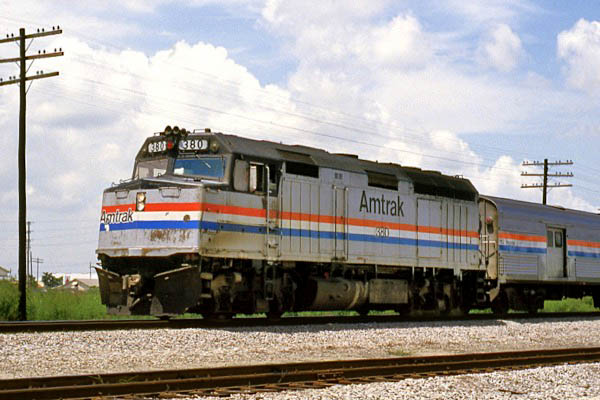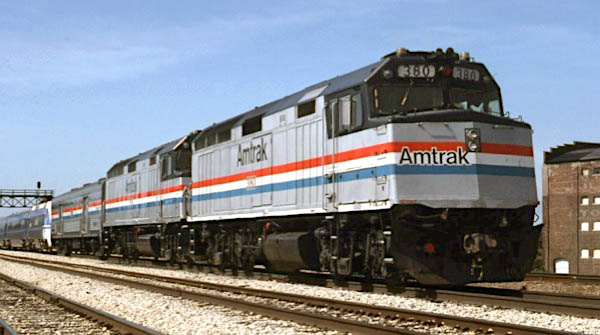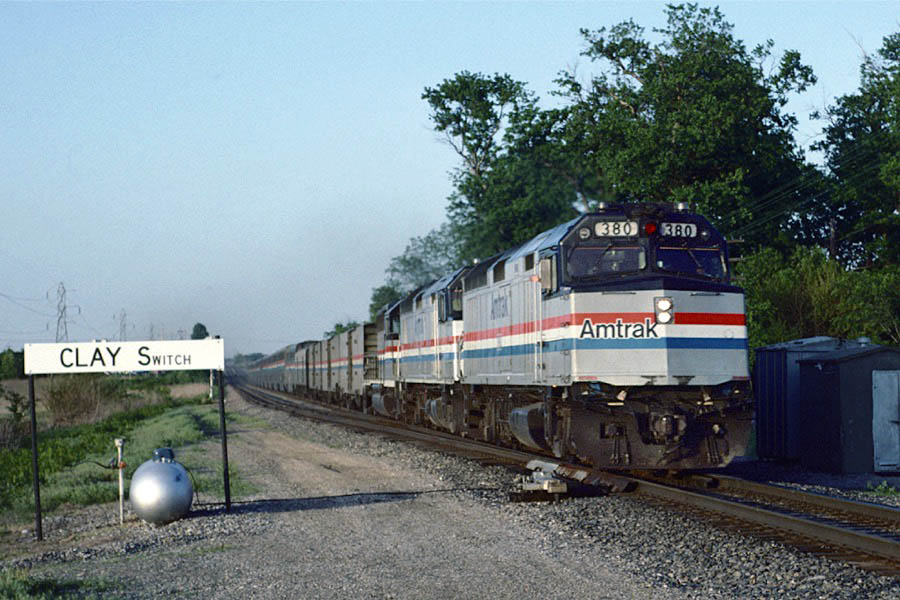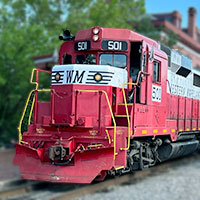 |
Western Maryland Scenic Motive Power |
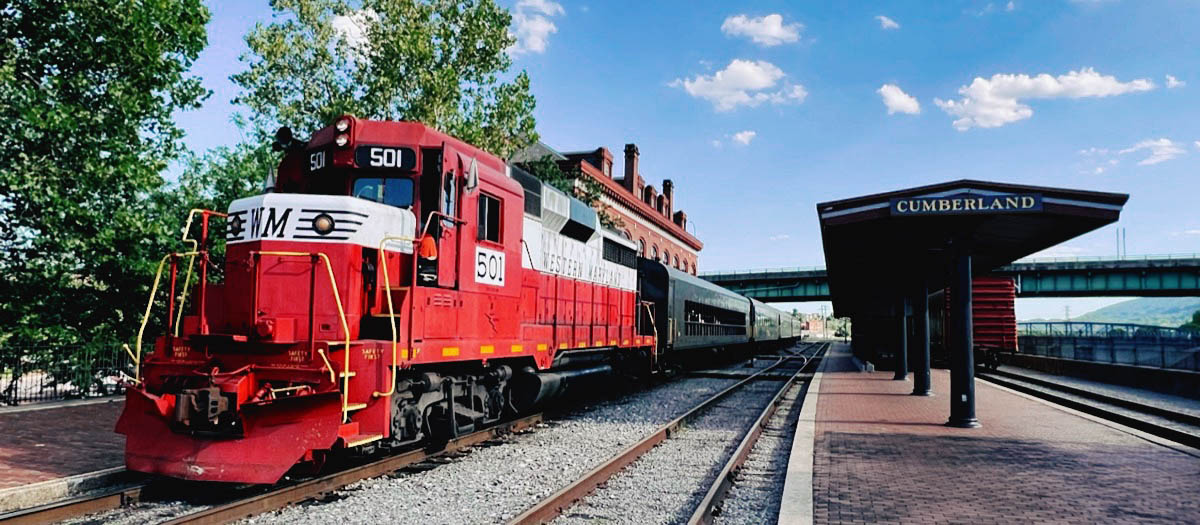
Cumberland, Md / Jun 2022 / Ben Wells

Western Maryland Scenic Railroad has been providing excursions of all kinds for over 30 years in the heart of Mountain Maryland. We are a 501(c)3 not-for-profit organization that has a focus on heritage railroading through restoration, education, and experience. Specialty trains include steam and diesel-powered excursions like The Polar Express Train Ride, Murder Mystery Dinner Trains, Ice Cream Trains, Spring Fling, Pumpkin Patch, Evening Dinner Trains, Private Charters, and more.
Steam Power
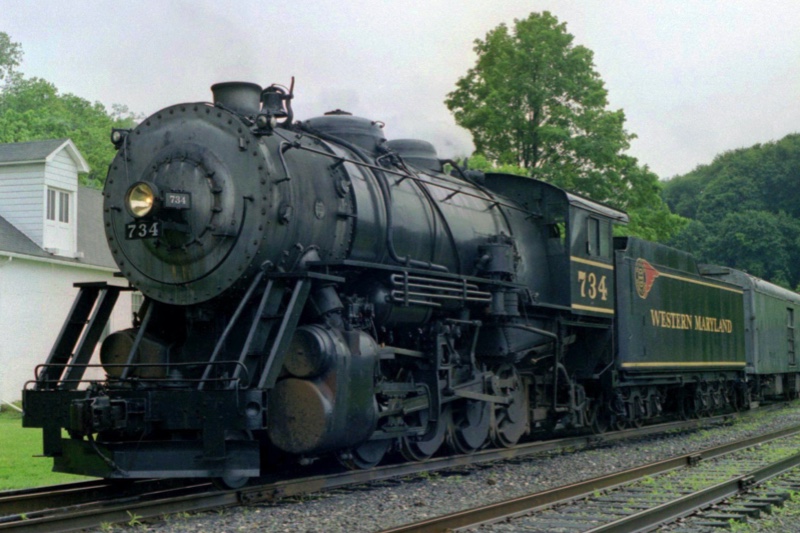
Western Maryland Scenic #734
Frostburg, Md / Jun 2003 / RWH


Western Maryland Scenic #734
to Marquette & Huron Mountain
to Illinois Railway Museum
to Western Maryland Scenic #734
out of service
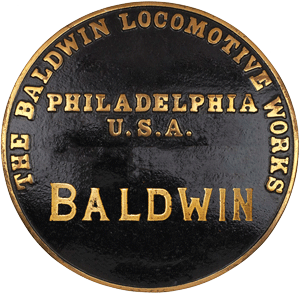

 This class [of Consolidations] came from Baldwin [to Lake Superior & Ishpeming] as a batch. The trio exerted hefty tractive efforts through a large cylinder volume fed by sizable 14" piston valves from a very large boiler. The firebox heating surface included 29 sq ft in four arch tubes. Its relatively high axle loading reflects a 1909 LS&I program to relay all track with 80 lb/yard rail. Minimum curve radius was a relatively gentle 5 deg and maximum grade was a mild 1.6%.
The class more than lived up to its designers' aspirations.
This class [of Consolidations] came from Baldwin [to Lake Superior & Ishpeming] as a batch. The trio exerted hefty tractive efforts through a large cylinder volume fed by sizable 14" piston valves from a very large boiler. The firebox heating surface included 29 sq ft in four arch tubes. Its relatively high axle loading reflects a 1909 LS&I program to relay all track with 80 lb/yard rail. Minimum curve radius was a relatively gentle 5 deg and maximum grade was a mild 1.6%.
The class more than lived up to its designers' aspirations.
Aurele Durocher wrote in 1958 that the locomotives' great bulk dictated two flat domes on top of the boiler and the displacement of the bell to an unusual setup on the boiler's flank. The burly beasts quickly and permanently became known as "hogs". They weren't very fast, but they could "pull the longest string of hoppers up to Negaunee than any LS&I engine had done before--60 cars." "I recall their exhaust as being heavy and boomy", Durocher added, "they even sounded powerful when moving."
class details by Steve Llanso - SteamLocomotive.com
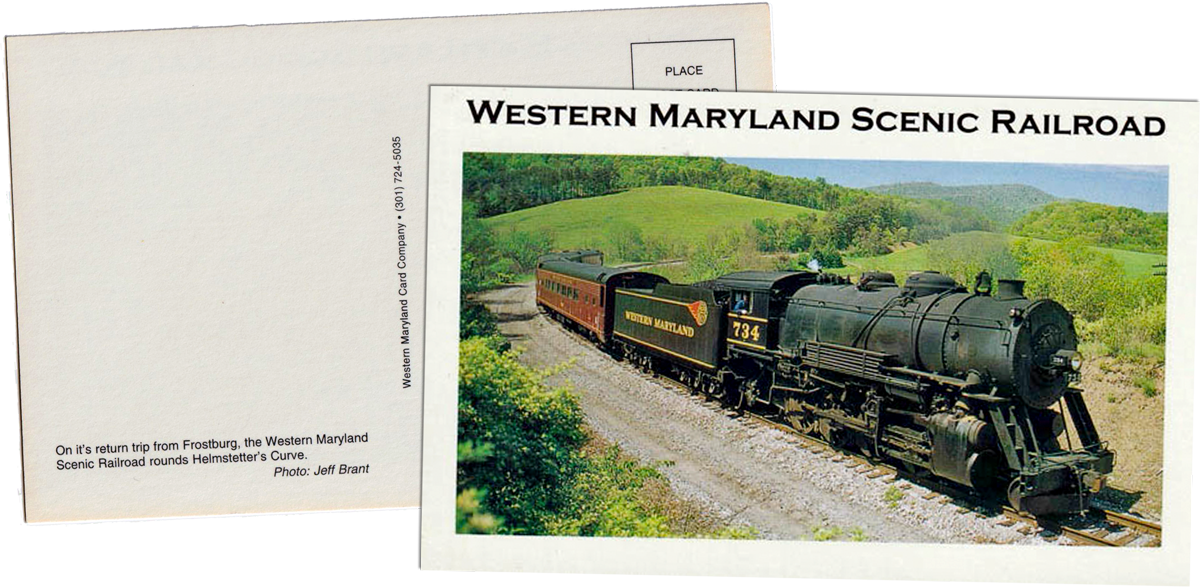
postcard / collection
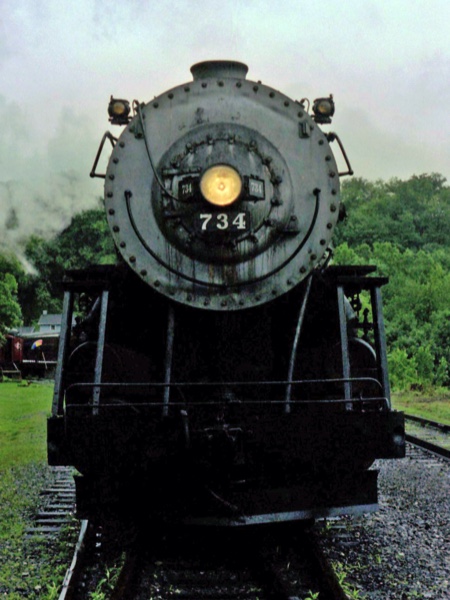
Frostburg, Md / Jun 2003 / RWH
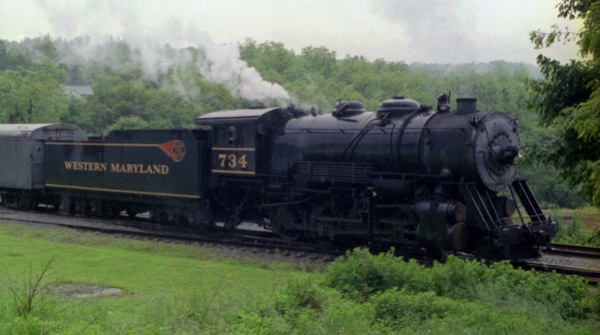
Frostburg, Md / Jun 2003 / RWH
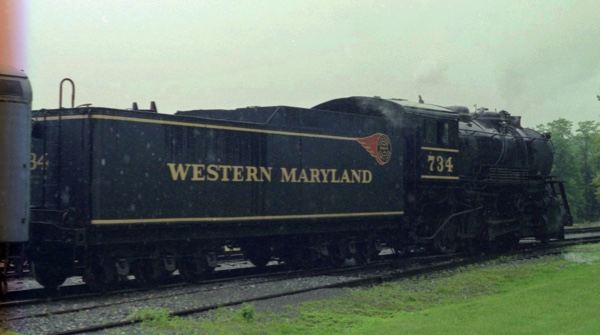
Frostburg, Md / Jun 2003 / RWH
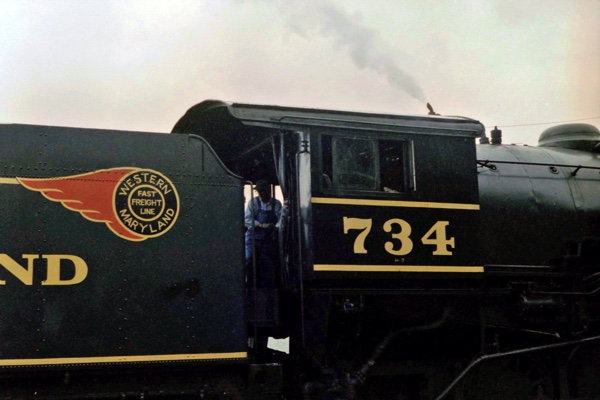
Jun 2003 / RWH
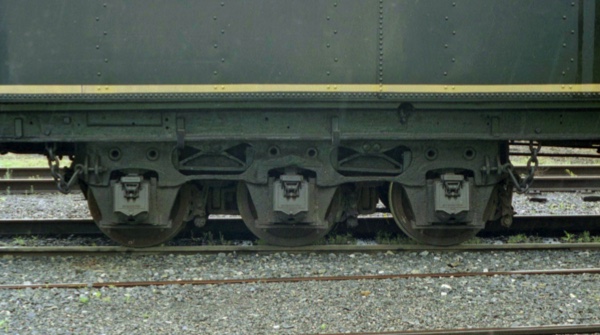
Jun 2003 / RWH
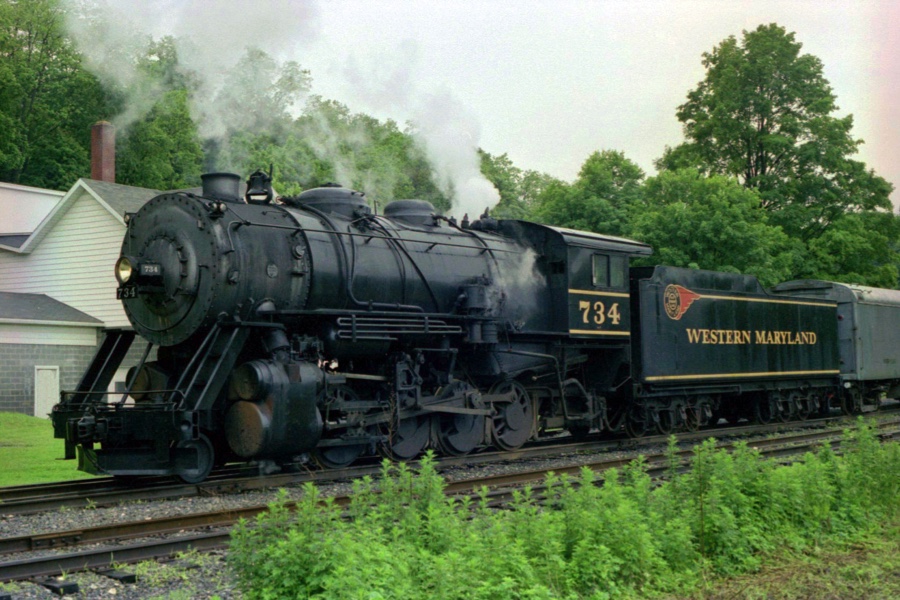
Frostburg, Md / Jun 2003 / RWH
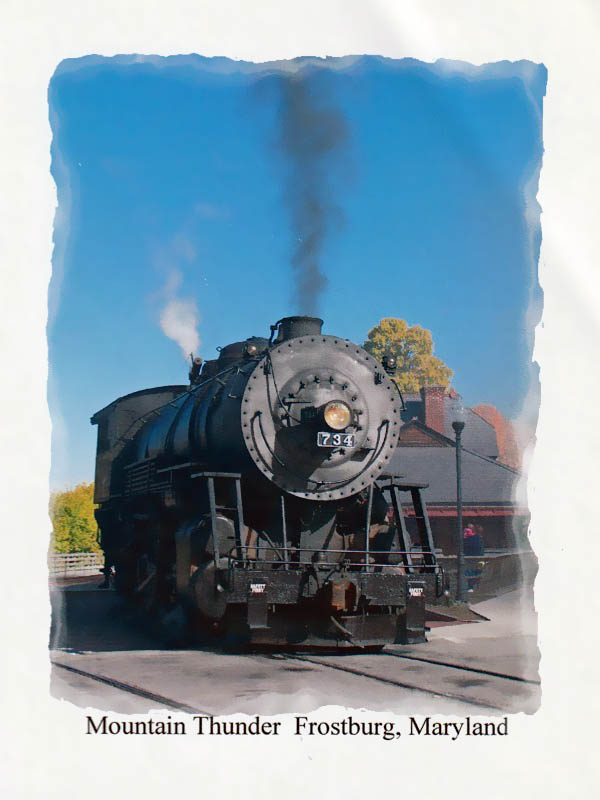
collection
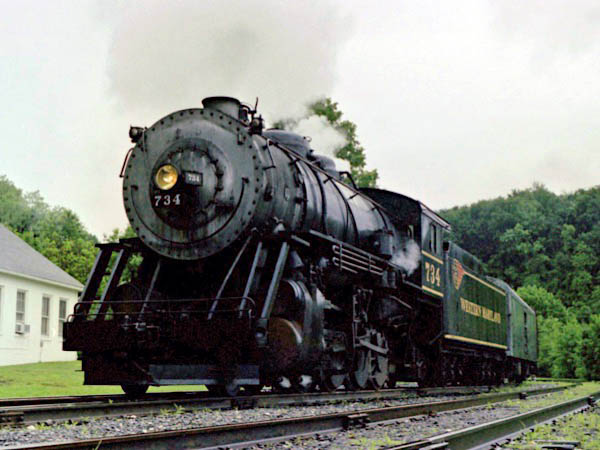
Frostburg, Md / Jun 2003 / RWH
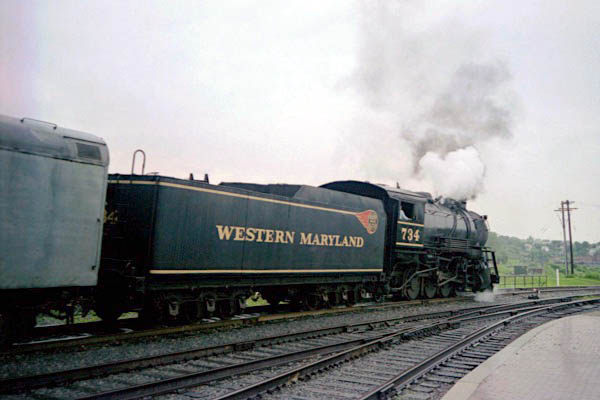
Cumberland, Md / Jun 2003 / RWH
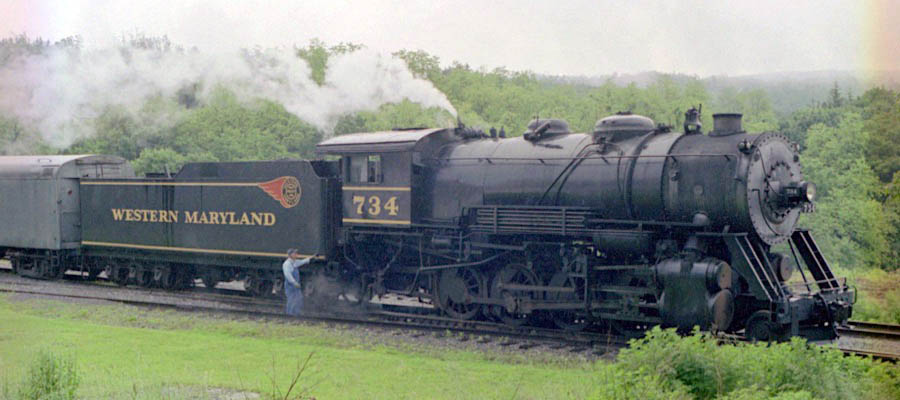
Frostburg, Md / Jun 2003 / RWH
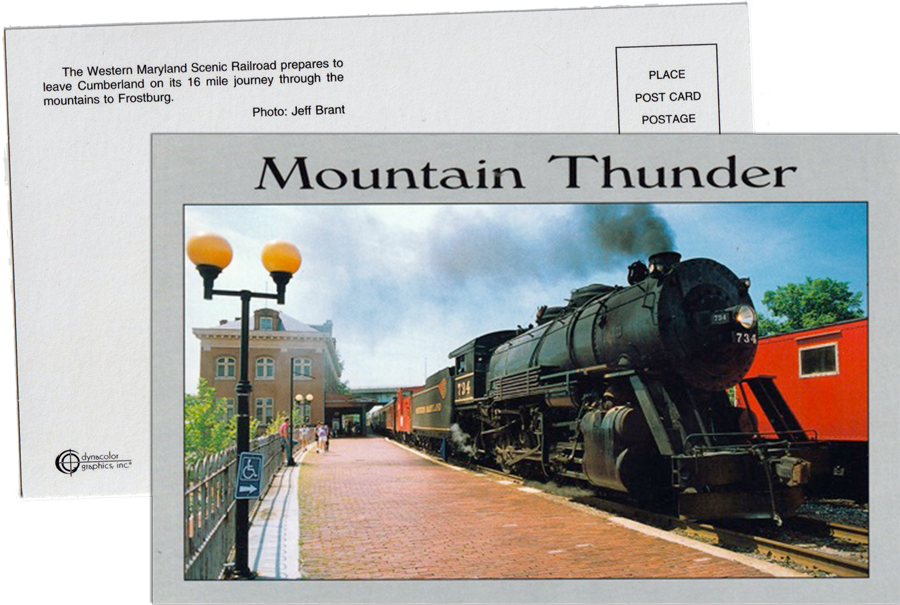
postcard / collection
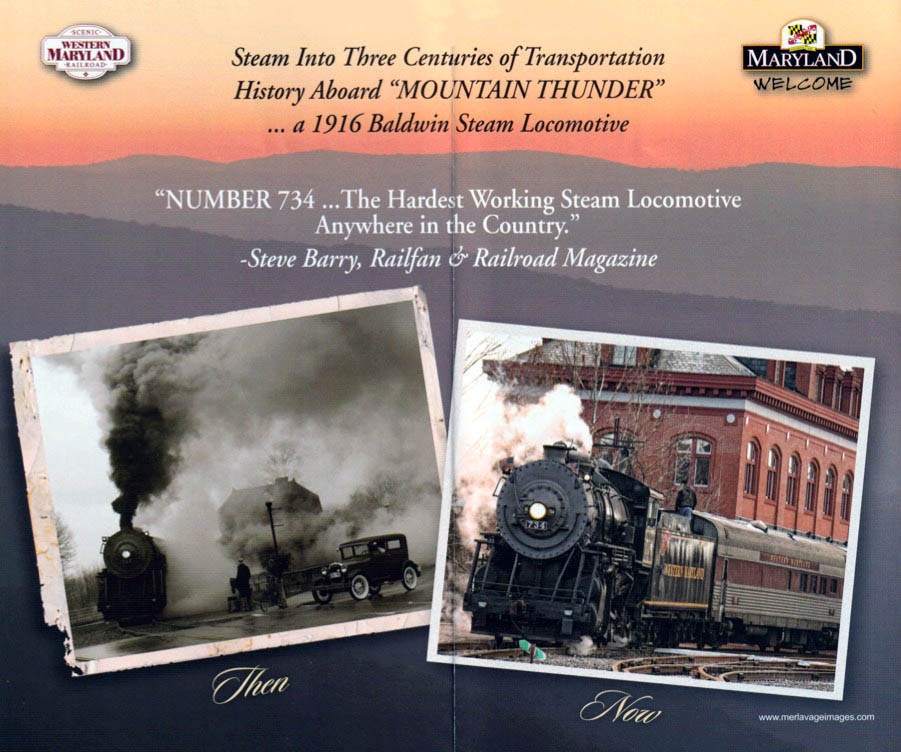
collection
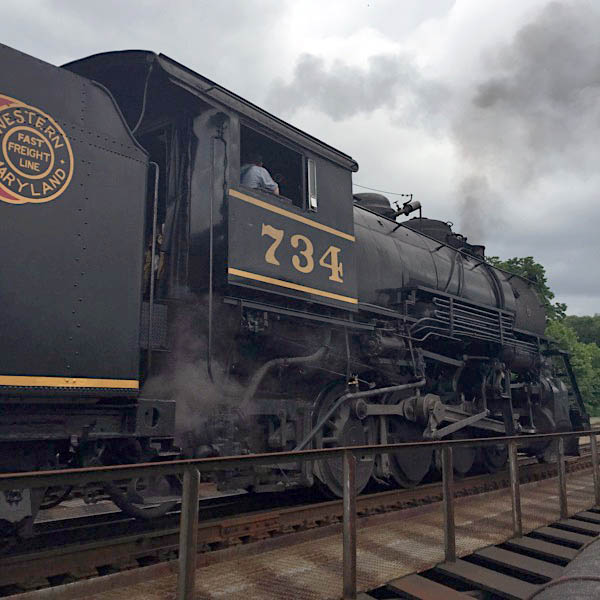
Cumberland, Md / Jun 2015 / RWH
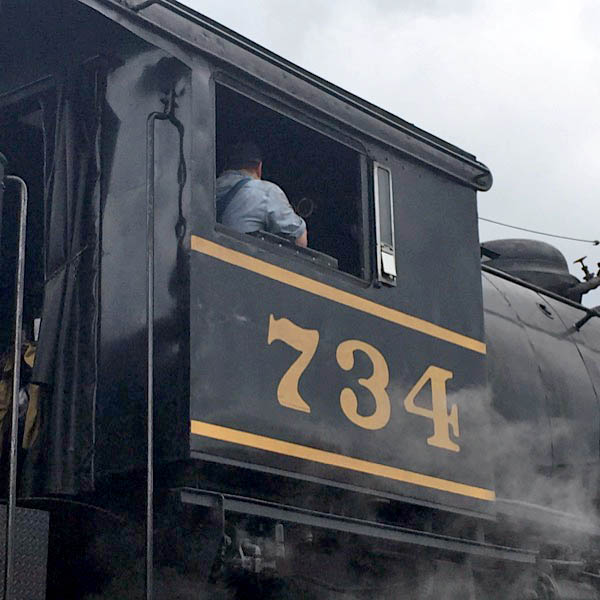
Cumberland, Md / Jun 2015 / RWH
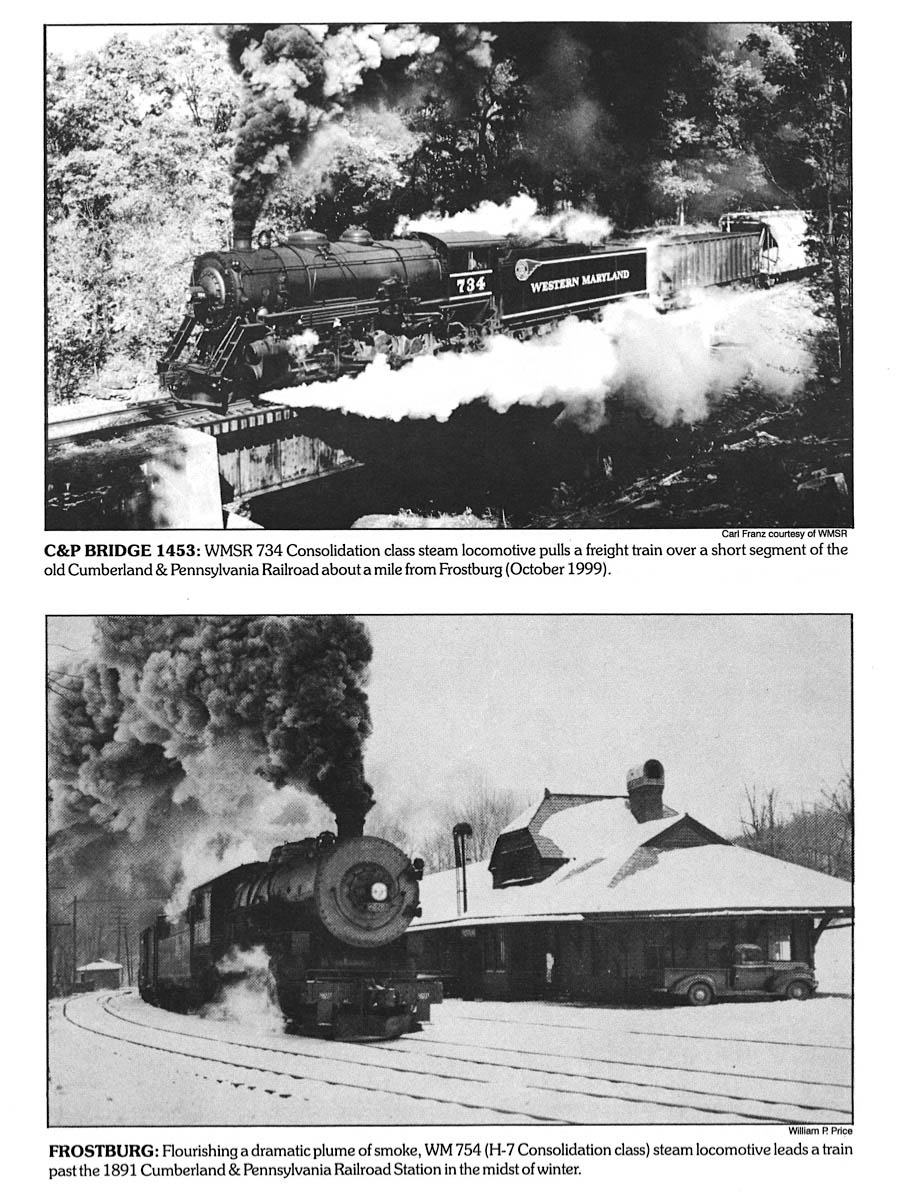
from Western Maryland Scenic Travel Guide by Richard Kirsch and John Rundle - 1990 / collection
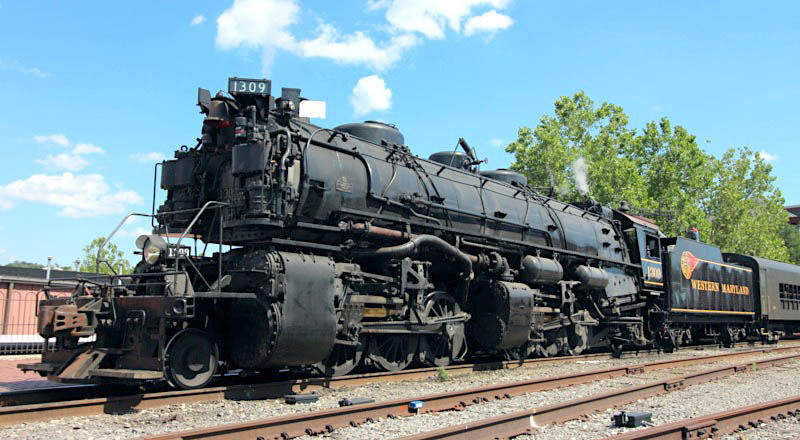
Western Maryland Scenic #1309
Cumberland, Md / Jun 2022 / RWH


Western Maryland Scenic #1309
last steam locomotive built by Baldwin
to Baltimore & Ohio Railway Museum
to Western Maryland Scenic #1309
restored to operation 2021


this locomotive also posted in B&O Railroad Museum Steamers
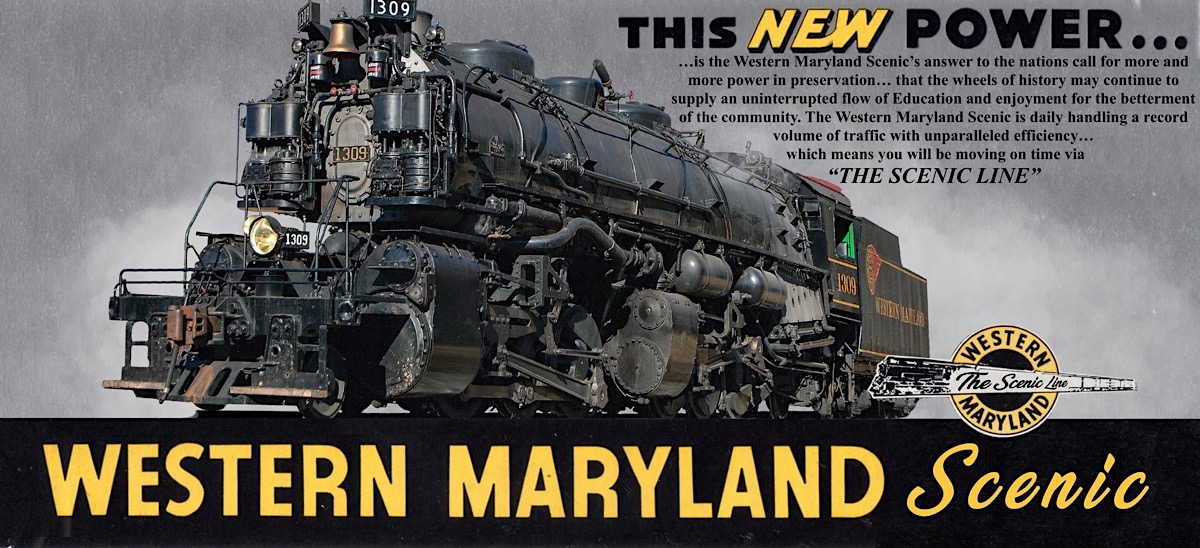
collection
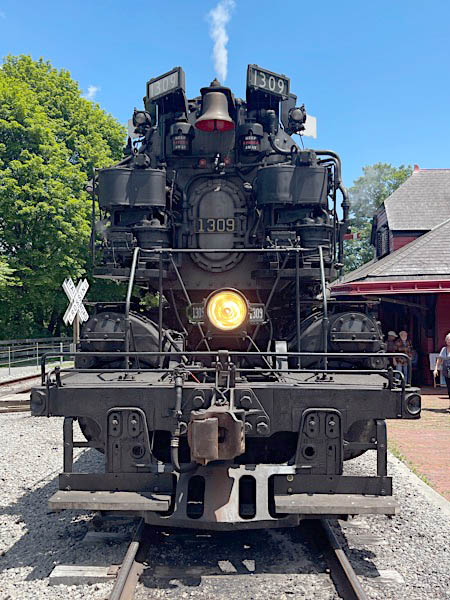
Jun 2022 / RWH
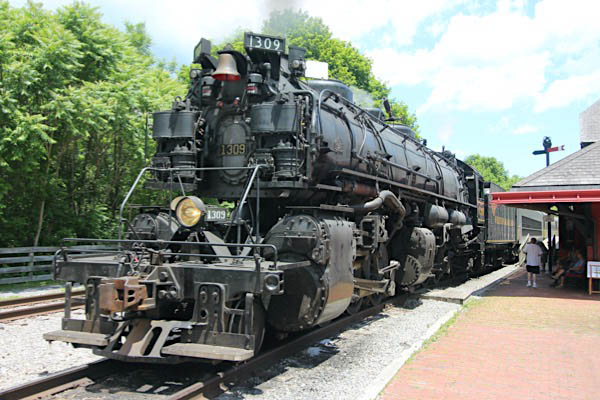
Frostburg, Md / Jun 2022 / RWH
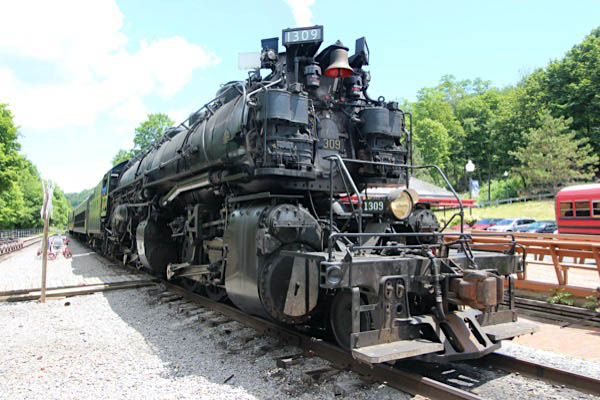
Frostburg, Md / Jun 2022 / RWH

Western Maryland Scenic #1309 has a special place in railroad history. At a time when other railroad companies were shifting from steam locomotives to diesel-powered engines, one railroad company stuck with what had worked for decades. The Chesapeake & Ohio Railway (C&O) stuck with the steam engine longer than their competitors; and in 1949, they received the Chesapeake & Ohio #1309, now known as Western Maryland Scenic #1309, from Baldwin Locomotive Works which would be the last steam locomotive built by Baldwin!
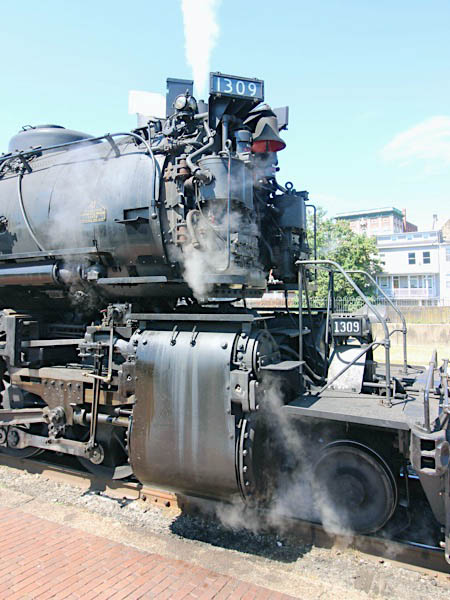
Jun 2022 / RWH
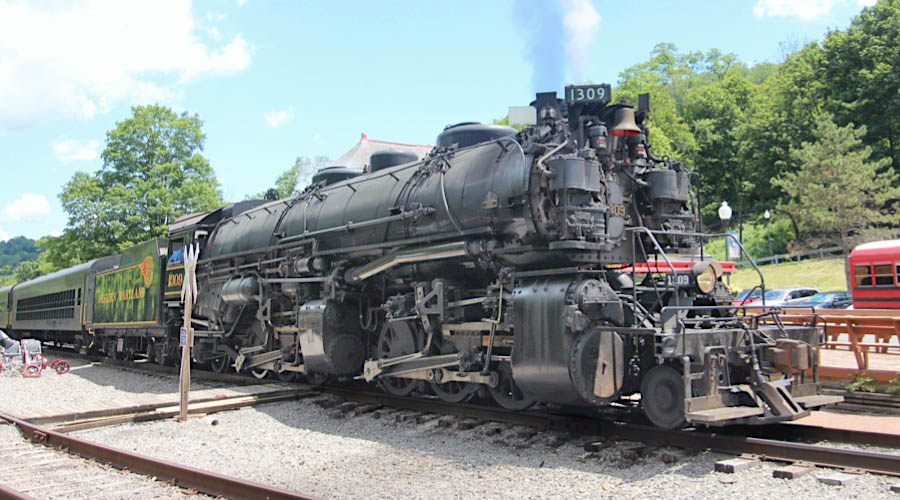
Frostburg, Md / Jun 2022 / RWH
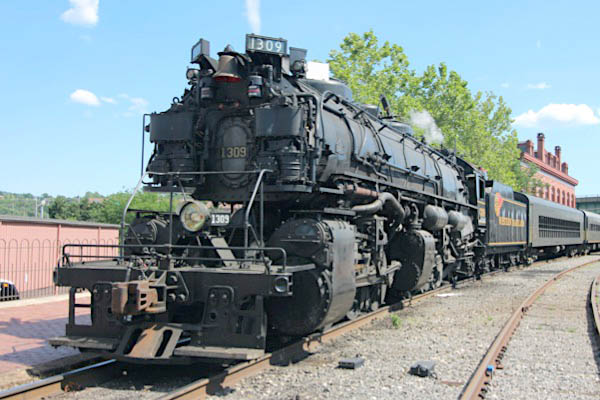
Cumberland, Md / Jun 2022 / RWH
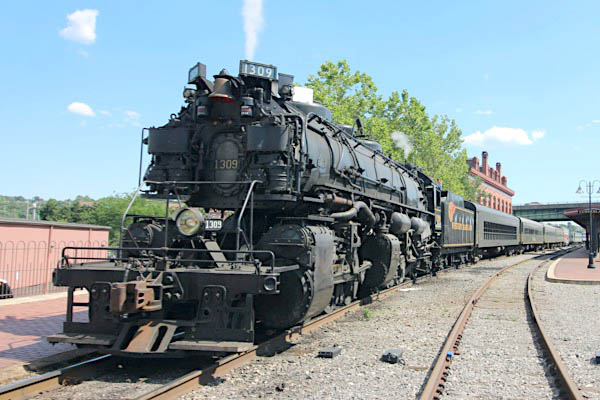
Cumberland, Md / Jun 2022 / RWH
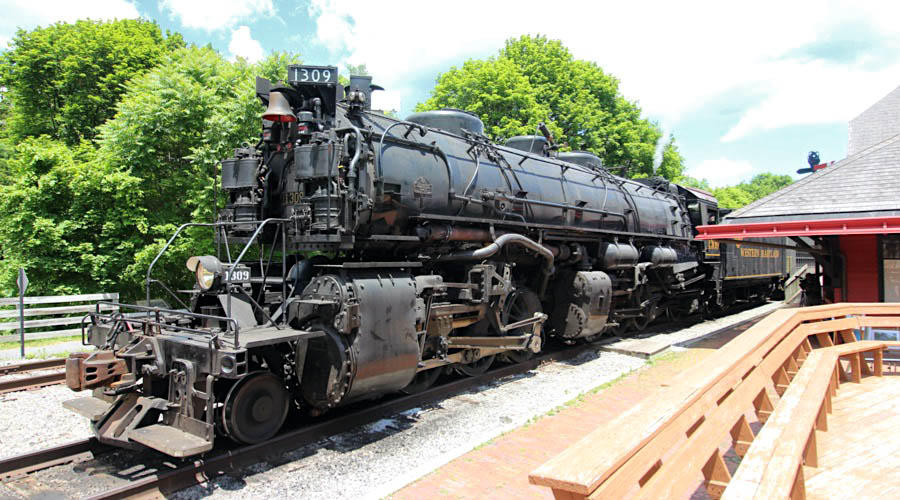
Frostburg, Md / Jun 2022 / RWH
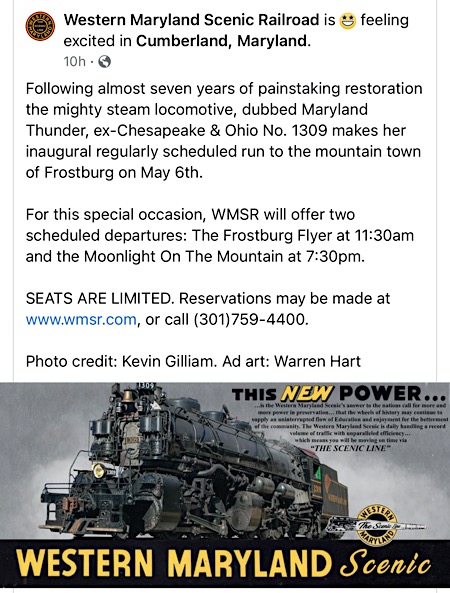
web
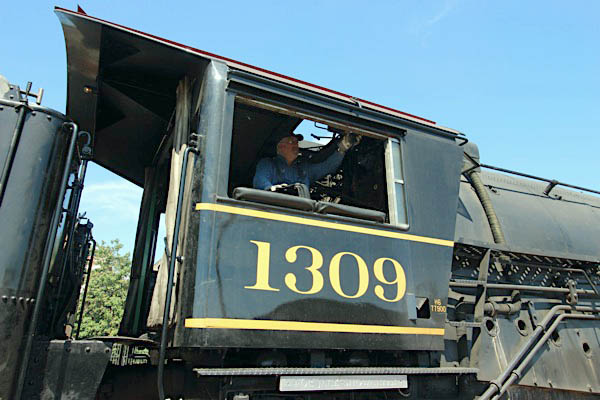
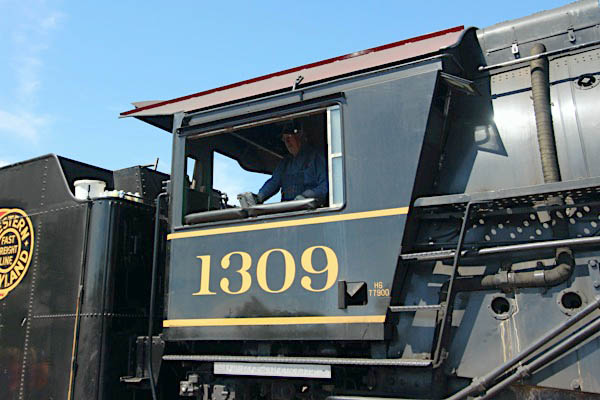
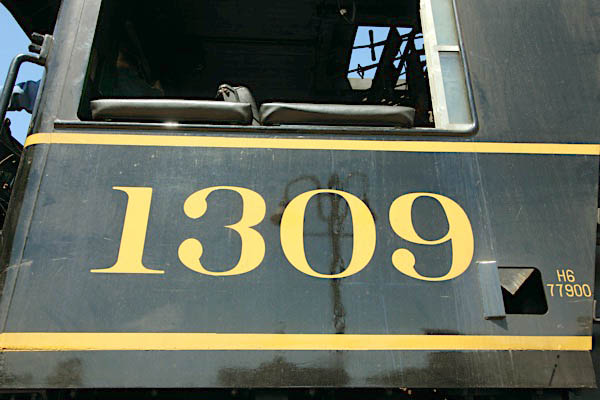
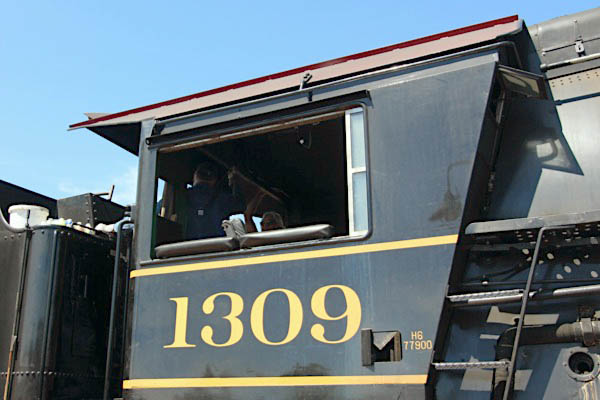
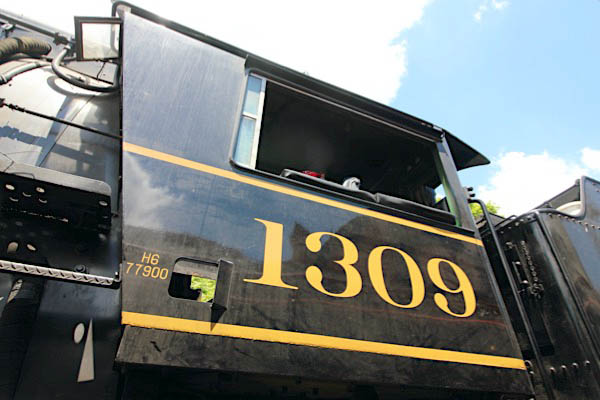
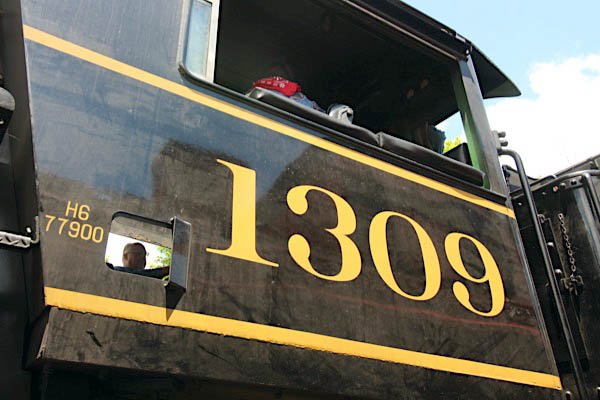
Jun 2022 / RWH

Called the "Mallet" (pronounced Mallay), #1309 was one of the last types of steam locomotives retired when diesel-electric engines came into the picture. The Mallet is a compound locomotive that was created by Swiss mechanical engineer Anatole Mallet in 1885 for the Bayonne-Anglet-Biarritz Railway in France. The locomotive is called "compound" because it uses the steam twice, first for the rear set of high pressure cylinders and second for the low pressure front cylinders. On the locomotive there are two cross compound air compressors mounted on the smoke box door to supply enough air for frequent heavy braking for use in heavy mountain railroading. This mounting of compressors on the front of the smokebox gave the locomotive a more "massive" appearance and became known as the "C&O look". This look can be seen on the center locomotive in the steamlocomotive.com header image. The "mallet" design made its debut in the United States when the American Locomotive Company "ALCO" constructed an 0-6-6-0 compound Mallet for the B&O in 1904. In 1910 the C&O changed to their version of the 2-6-6-2 compound locomotive that helped drag coal through even more mountainous areas and tighter curves in West Virginia and Kentucky.
 The Baldwin Locomotive Works built #1309 in September of 1949 as its last Class 1 mainline domestic steam locomotive and the last to be commercially built by Baldwin for use by a railroad in the USA. The Chesapeake & Ohio Railway Co. became the last railroad to purchase a steam locomotive built by the Baldwin Locomotive for use in service in America when they ordered 25 2-6-6-2, mallet type locomotive in 1948. At this time, steam locomotives had been in production for over 100 years and over 70,000 had been built to date. A problem arose when one of the worst labor unrests hit the coal fields in 1949. During that year the mines only worked 170 days. C&O was forced to then cancel the last 15 of the locomotives due to the economic state of the railroad. The locomotives arrived on the C&O in 1949 and were assigned to the H-6 class with the numbers of 1300-1309. The new locomotives built, #1300-1309, were to replace the older ones that were at the end of their serviceable lives and were essentially duplicates of the class H-6 type built in the early 1920’s. They were the last of a series of 2-6-6-2s that the Chesapeake & Ohio began in 1911.
The Baldwin Locomotive Works built #1309 in September of 1949 as its last Class 1 mainline domestic steam locomotive and the last to be commercially built by Baldwin for use by a railroad in the USA. The Chesapeake & Ohio Railway Co. became the last railroad to purchase a steam locomotive built by the Baldwin Locomotive for use in service in America when they ordered 25 2-6-6-2, mallet type locomotive in 1948. At this time, steam locomotives had been in production for over 100 years and over 70,000 had been built to date. A problem arose when one of the worst labor unrests hit the coal fields in 1949. During that year the mines only worked 170 days. C&O was forced to then cancel the last 15 of the locomotives due to the economic state of the railroad. The locomotives arrived on the C&O in 1949 and were assigned to the H-6 class with the numbers of 1300-1309. The new locomotives built, #1300-1309, were to replace the older ones that were at the end of their serviceable lives and were essentially duplicates of the class H-6 type built in the early 1920’s. They were the last of a series of 2-6-6-2s that the Chesapeake & Ohio began in 1911.
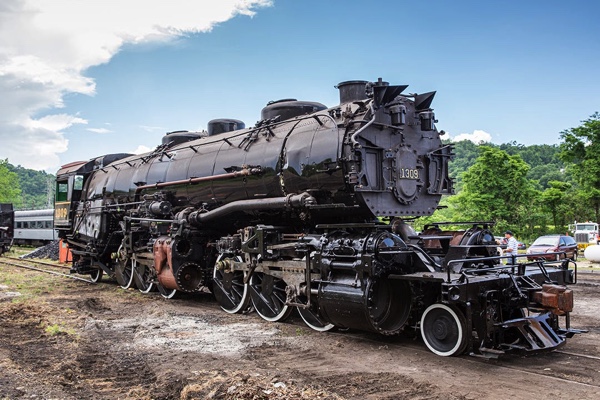 Although the locomotives were stored on the railroad for years before the C&O started scrapping them, some steam locomotives were saved for donation to communities along the railroad. The last H-6 #1309 was saved and stored at Russell, KY for years until it was sent to the Huntington Shops, along with K-4 #2705 and J-3a #614, for cosmetic restoration. After the restoration, the three locomotives were shipped in a special train to the B&O Museum in 1972. C&O #1309 has been preserved and displayed for generations of families to enjoy. On May 6, 2014 at 13:09(1:09pm) the Western Maryland Scenic Railroad announced the transfer of #1309 for restoration and operation.
Although the locomotives were stored on the railroad for years before the C&O started scrapping them, some steam locomotives were saved for donation to communities along the railroad. The last H-6 #1309 was saved and stored at Russell, KY for years until it was sent to the Huntington Shops, along with K-4 #2705 and J-3a #614, for cosmetic restoration. After the restoration, the three locomotives were shipped in a special train to the B&O Museum in 1972. C&O #1309 has been preserved and displayed for generations of families to enjoy. On May 6, 2014 at 13:09(1:09pm) the Western Maryland Scenic Railroad announced the transfer of #1309 for restoration and operation.
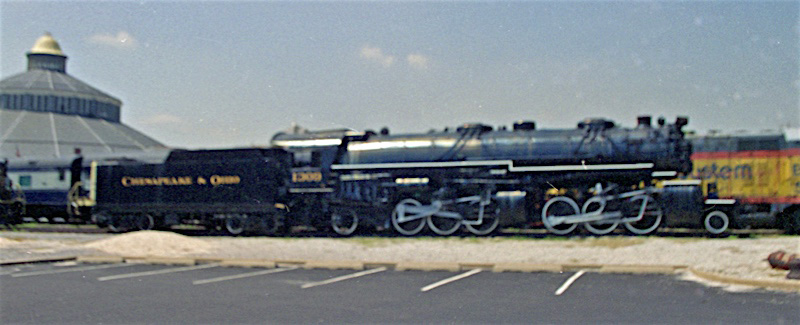
Baltimore, Md / Aug 1994 / JCH

Baltimore, Md / Mar 2016 / RWH

See also our complete Baltimore & Ohio Railway Museum scrapbook elsewhere in Preservation

RWH
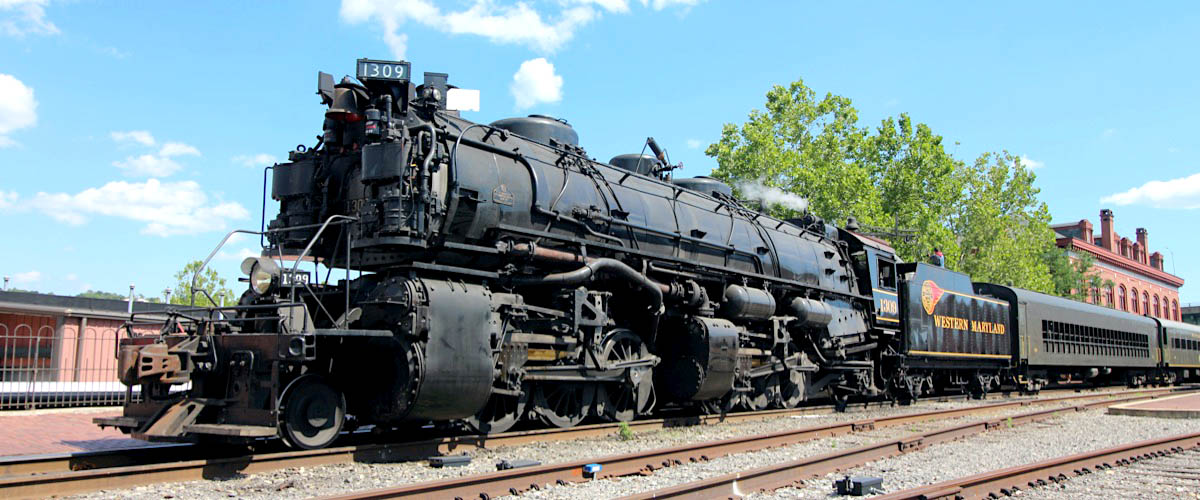
Cumberland, Md / Jun 2022 / RWH
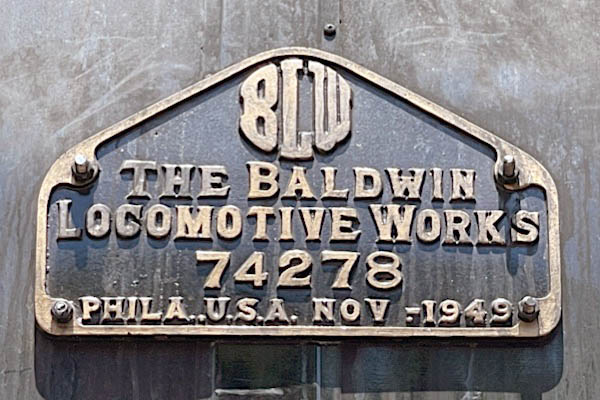
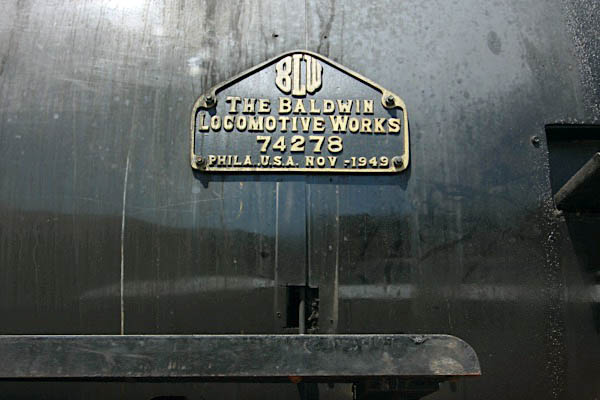
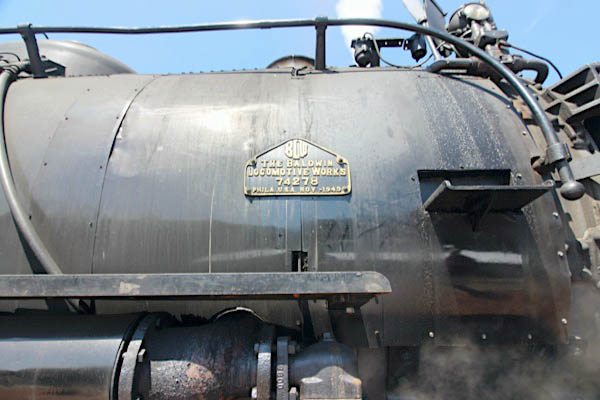
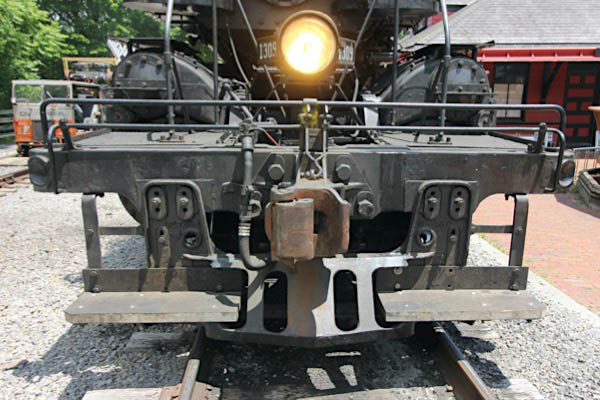
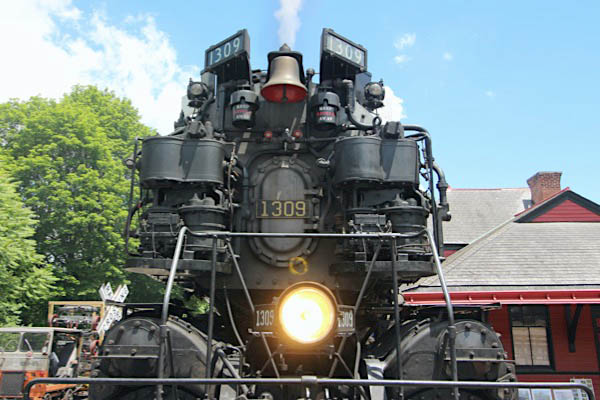
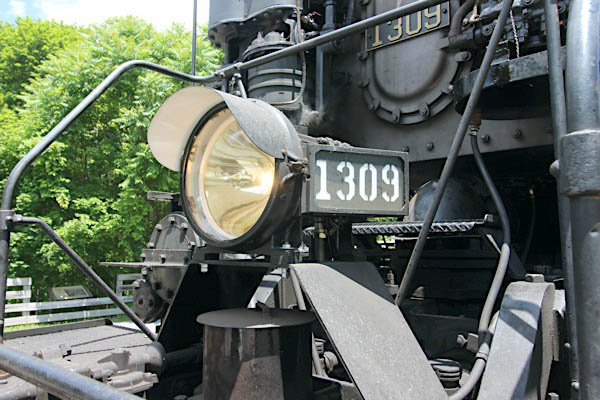
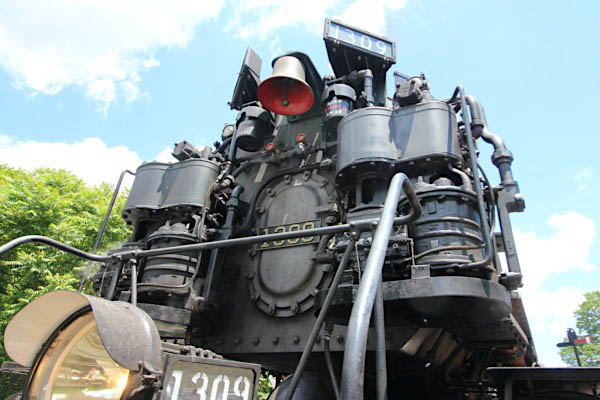
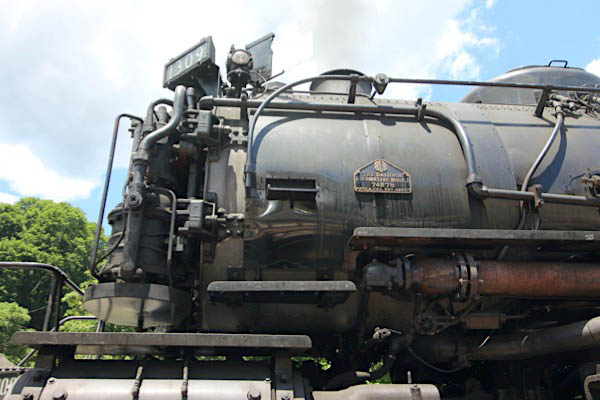
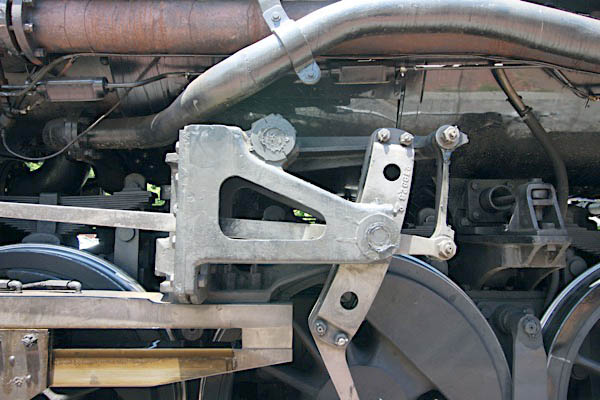
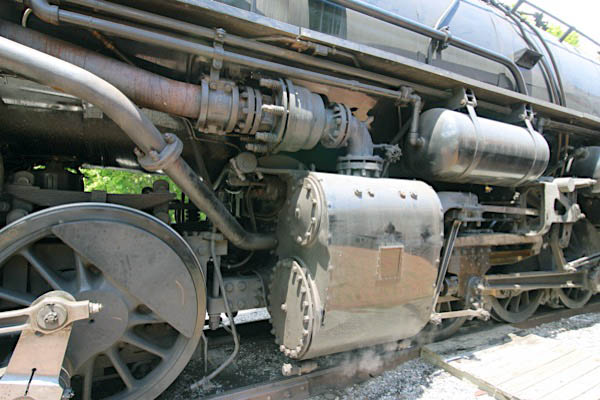
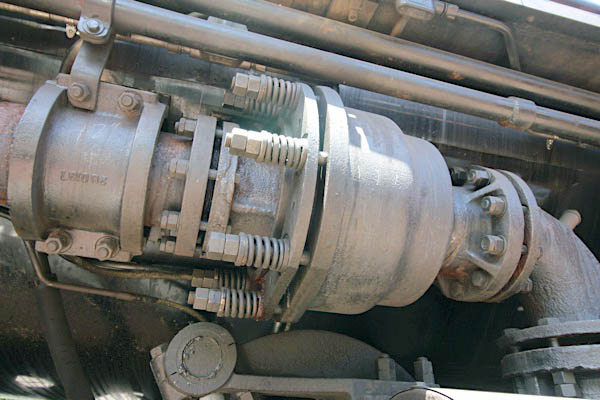
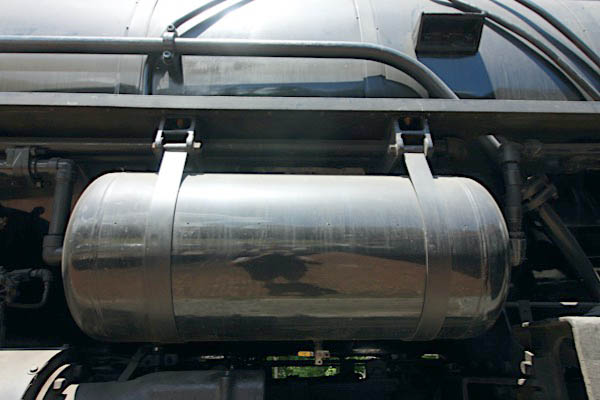
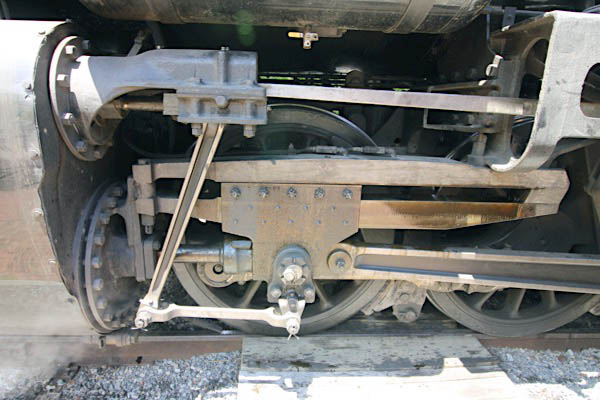
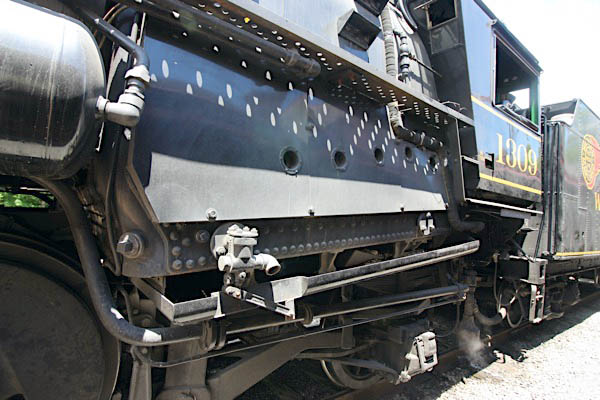
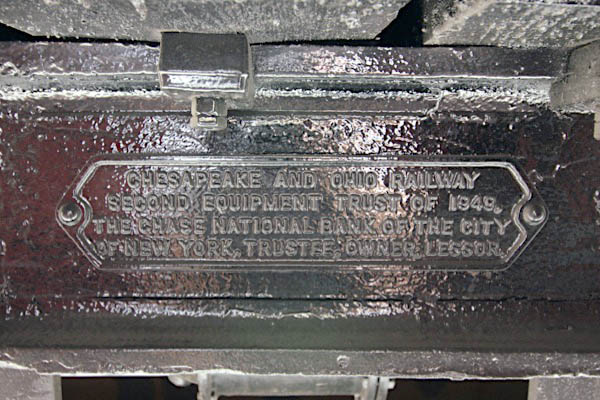
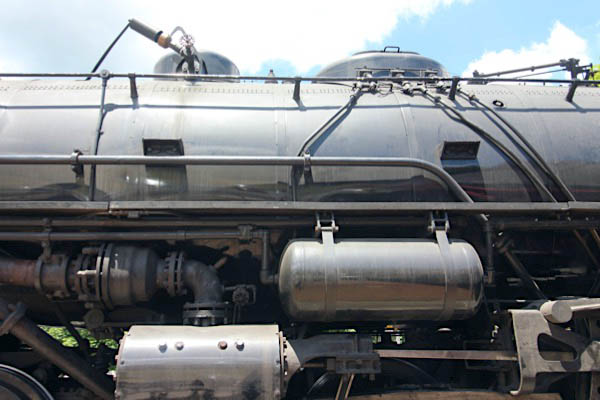
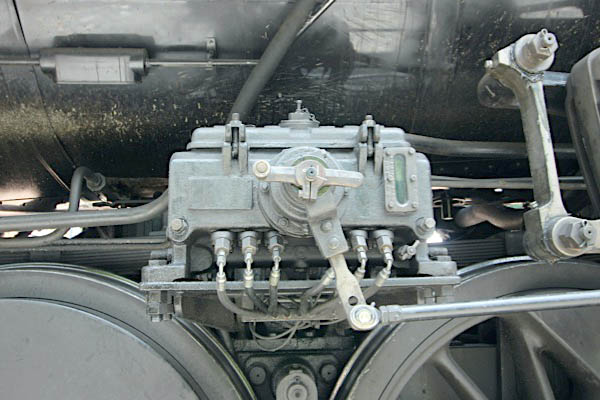
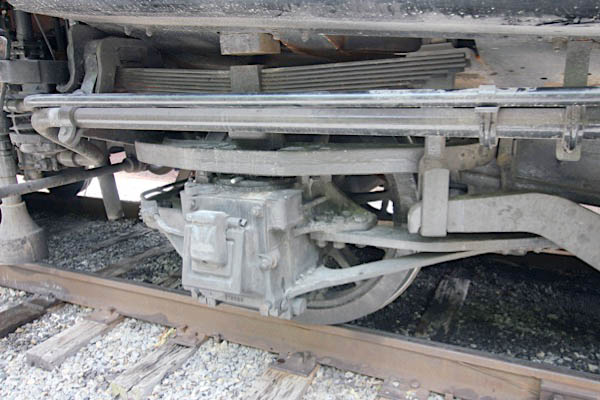
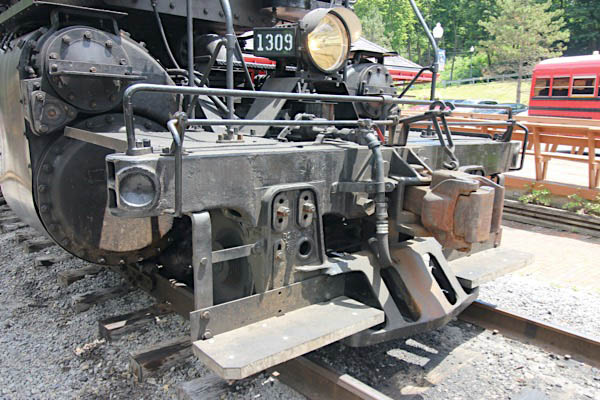
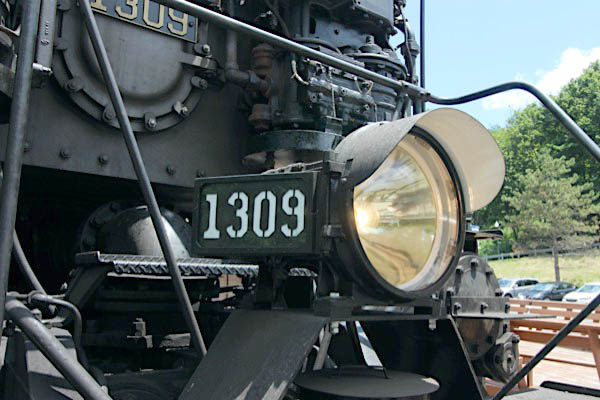
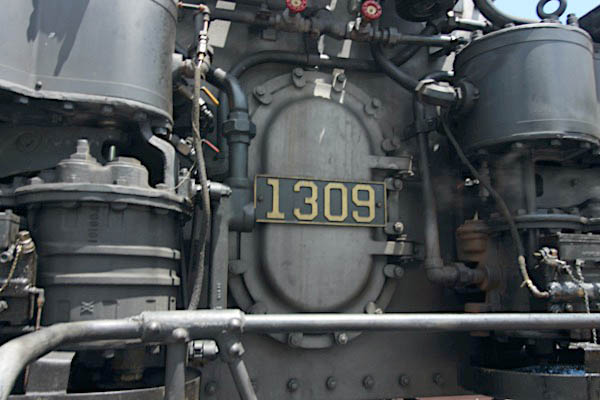
Jun 2022 / RWH
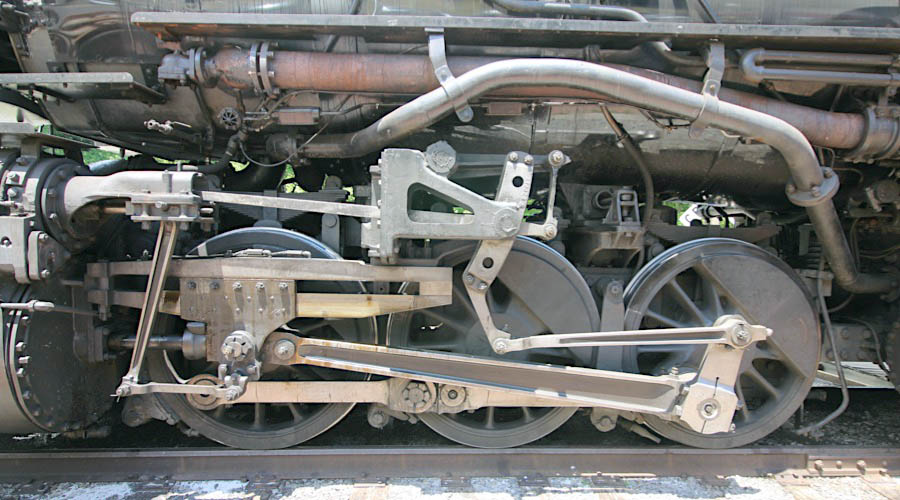
Jun 2022 / RWH

Cumberland, Md / Jun 2022 / RWH
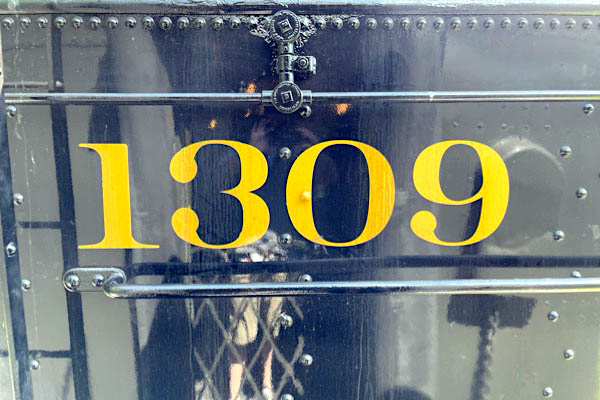
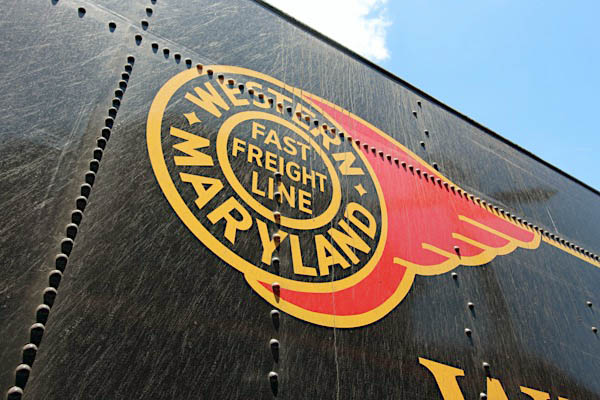
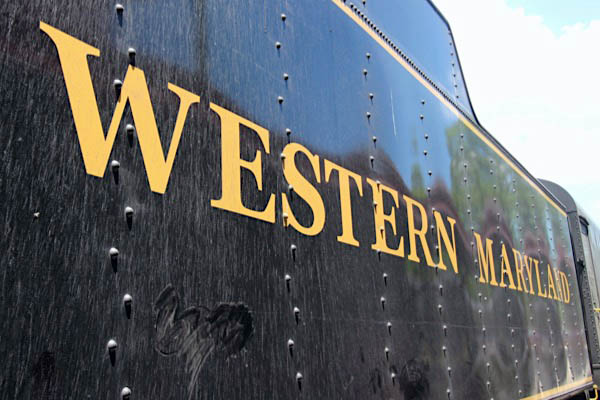

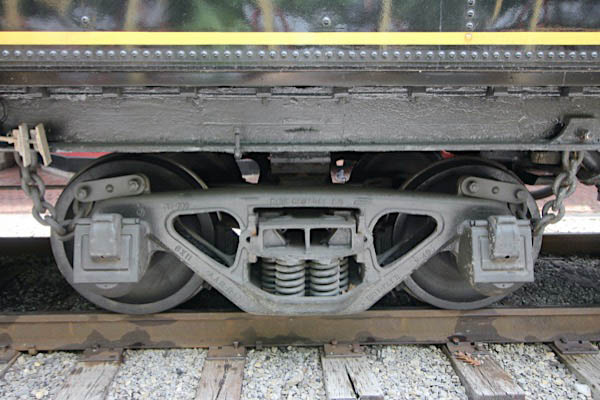
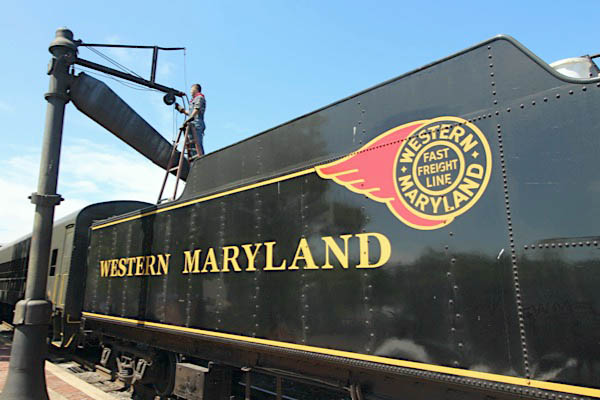
Jun 2022 / RWH
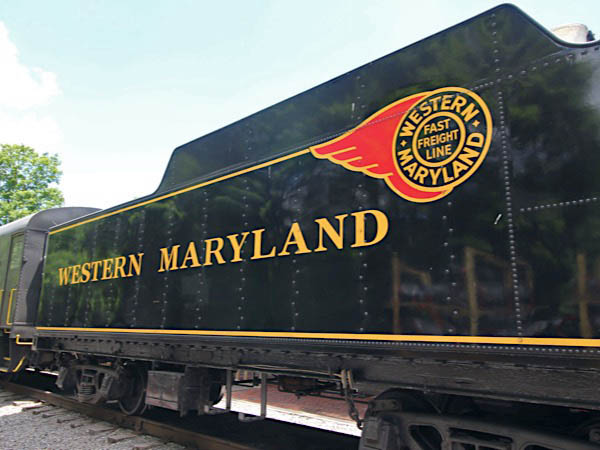
Jun 2022 / RWH
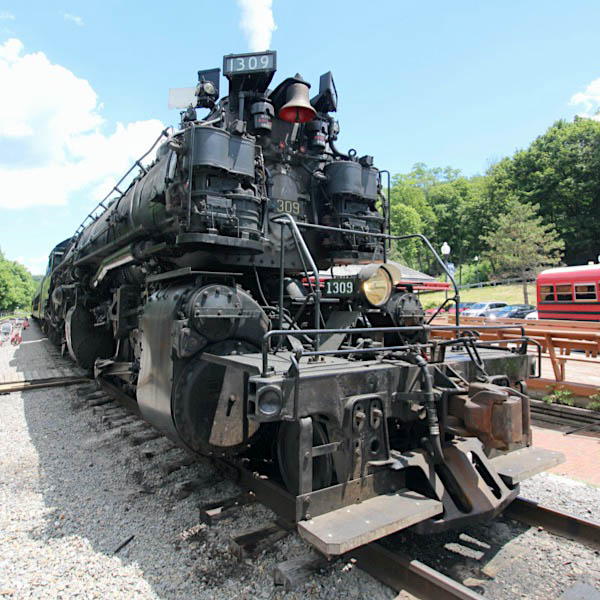
Jun 2022 / RWH
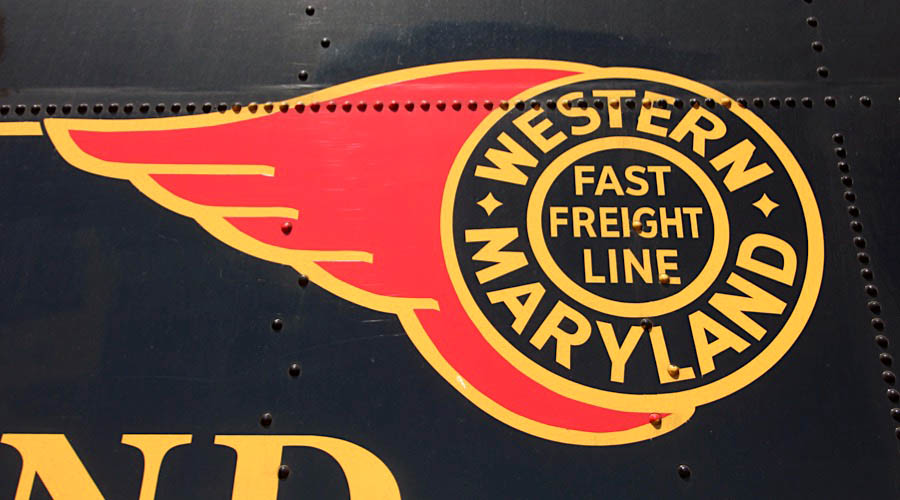
Jun 2022 / RWH
 Article
Article
HISTORY OF 1309
by Kevin Keefe
Of all the strange plot twists in the story of steam’s final years, one of my favorites is the Chesapeake & Ohio’s decision in 1948 to buy 2-6-6-2s from Baldwin to shore up its operations in West Virginia coal country.
Think about that for a moment. That year, most American railroads were buying vast quantities of new diesels from Electro-Motive, Alco, and other manufacturers. Steam was clearly on the way out, no matter how well a New York Central poppet-valve Niagara or Norfolk & Western Y6b might perform.
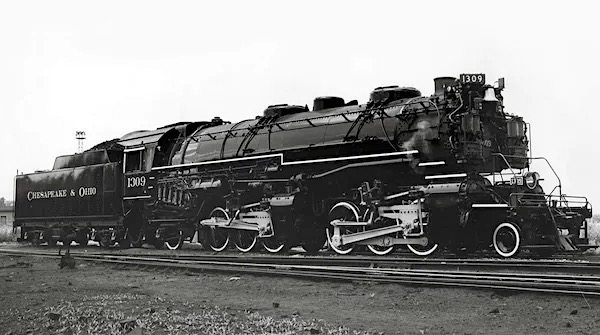 Despite the tide of history, C&O was in a jam and needed power quickly. It served the mines with a big roster of Mallet compounds, some more than 35 years old, and they were wearing out quickly. But instead of opting for more of its modern 4-8-4 Greenbriers, 2-8-4 Kanawhas, or 2-6-6-6 Alleghenies, C&O stuck with a basic locomotive design that dated back to its H-1 2-6-6-2 of 1910.
Despite the tide of history, C&O was in a jam and needed power quickly. It served the mines with a big roster of Mallet compounds, some more than 35 years old, and they were wearing out quickly. But instead of opting for more of its modern 4-8-4 Greenbriers, 2-8-4 Kanawhas, or 2-6-6-6 Alleghenies, C&O stuck with a basic locomotive design that dated back to its H-1 2-6-6-2 of 1910.
What emerged was an order for 25 2-6-6-2s in what was the new H-6 class. The order was soon cut back to 10 engines after labor unrest in Pocahontas country depressed mine production. Those final Mallets, delivered in 1949 and numbered 1300–1309, would be the last steam locomotives Baldwin would ever build for a North American railroad.
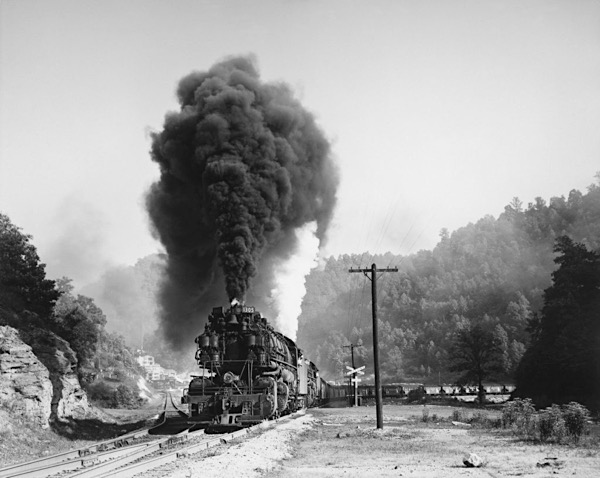 The story of these engines has currency because crews are hard at work bringing H-6 No. 1309 back to life for operation on the Western Maryland Scenic Railroad (WMSR). Based at Cumberland, Md., with a shop at nearby Ridgeley, W.Va., the tourist line acquired the 2-6-6-2 in 2014 after the locomotive spent decades at the B&O Railroad Museum in Baltimore. New as they were, the last C&O steam engines never got adequate maintenance, lengthening the list of work needed to bring 1309 back to life.
The story of these engines has currency because crews are hard at work bringing H-6 No. 1309 back to life for operation on the Western Maryland Scenic Railroad (WMSR). Based at Cumberland, Md., with a shop at nearby Ridgeley, W.Va., the tourist line acquired the 2-6-6-2 in 2014 after the locomotive spent decades at the B&O Railroad Museum in Baltimore. New as they were, the last C&O steam engines never got adequate maintenance, lengthening the list of work needed to bring 1309 back to life.
The work in the WMSR shop has been going on for months now, led by contractor Gary Bensman and his Diversified Rail Services firm. But the unexpected setbacks are seriously pinching the railroad’s finances, and donations are actively being sought.
The prospect of 1309 in steam remains exciting. The H-6 class had a lot in common with earlier 2-6-6-2s on C&O, but the 1300s also had improvements you’d expect from postwar locomotives, including roller bearings and improved lubrication. Obsolete though they were on paper, they nonetheless were magnificent machines, in compound mode delivering as much as 77,900 pounds of tractive effort through their two sets of six 56-inch drivers. As steam historian Ed King puts it, “These were superb engines, not possessing any superlatives in size or weight, but they made an excellent basic design even better.”
Ed is a Norfolk & Western partisan, but he acknowledges that N&W’s rival C&O really had something with its 2-6-6-2s. “N&W borrowed one of the H-2s for testing in 1911, and it ran circles around N&W’s Y1 2-8-8-2, which was of modest size,” Ed told me. “N&W obtained 15 duplicates of the H-2 in 1912 and amassed the world’s second largest fleet, 190 engines, by 1918. These engines got N&W through World War I.” Quite an endorsement, that.
Back to the H-6s of 1949: The new engines spent their short careers working out of the Peach Creek terminal on the Logan district. At first, the H-6s gave the C&O all the reliable power it asked for, but even brand new Mallets couldn’t ward off the legions of GP7s C&O began ordering in 1950 and ’51; some of the 2-6-6-2s were retired as early as 1952, not even four years old. All were gone by 1957, with the 1308 eventually going to a park in Huntington, W.Va., and the 1309 to the B&O Museum. The 1308 is owned and maintained by the Collis P. Huntington Chapter, NRHS.
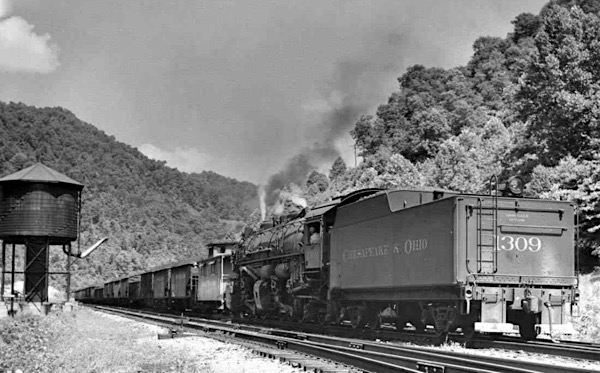 One might imagine what a spectacle the 1309 will create when it’s back in service. For a hint of that, I consulted an expert, the late Eugene Huddleston, the dean of C&O historians and co-author of C&O Power, published by Al Staufer in 1965. Gene was a longtime professor at Michigan State and died in 2011 at age 80.
Gene’s book is full of facts and figures and photographs, but it also contains vivid accounts of his encounters with C&O steam. He recalls a visit to Logan in 1952, when he arranged a rendezvous with the Scarlet Shifter, a regular train working the Island Creek Mine No. 27, a location so far south on the C&O it might be considered N&W territory. He caught a bus out of Logan and arrived in time to find two H-6s taking water at a new wooden tank; photos from that day indicate the lead engine was 1309.
One might imagine what a spectacle the 1309 will create when it’s back in service. For a hint of that, I consulted an expert, the late Eugene Huddleston, the dean of C&O historians and co-author of C&O Power, published by Al Staufer in 1965. Gene was a longtime professor at Michigan State and died in 2011 at age 80.
Gene’s book is full of facts and figures and photographs, but it also contains vivid accounts of his encounters with C&O steam. He recalls a visit to Logan in 1952, when he arranged a rendezvous with the Scarlet Shifter, a regular train working the Island Creek Mine No. 27, a location so far south on the C&O it might be considered N&W territory. He caught a bus out of Logan and arrived in time to find two H-6s taking water at a new wooden tank; photos from that day indicate the lead engine was 1309.
Images of Mallets merely tiptoeing around wouldn’t do, so Huddleston managed to grab a ride out of town with an electrician who was leaving the mine. The driver dropped him off about halfway up the three-mile grade out of Scarlet. Gene takes it from there:
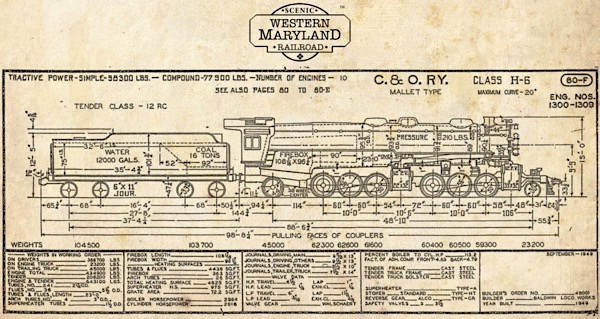 “Soon the doubleheader slowly canted into the curve, and with never a slip, twenty-four drivers under two big boilers produced sight and sound which photograph or tape record could never do justice to. Countless days since, the roar of twenty-four diesel cylinders has rebounded from the mountainside as two 2400 h.p. Alco road switchers in multiple operation have repeated the performance, but never again will this apotheosis of the steam locomotive in action occur.”
“Soon the doubleheader slowly canted into the curve, and with never a slip, twenty-four drivers under two big boilers produced sight and sound which photograph or tape record could never do justice to. Countless days since, the roar of twenty-four diesel cylinders has rebounded from the mountainside as two 2400 h.p. Alco road switchers in multiple operation have repeated the performance, but never again will this apotheosis of the steam locomotive in action occur.”
“Apotheosis” is a pretty loaded word, but I don’t doubt Gene’s memory one bit. I’m sure those two 2-6-6-2s fairly ripped apart the Island Creek valley that fine day. It’s something we all can look forward to repeating soon when, and not if, the Western Maryland Scenic has the 1309 back in fighting trim. It should be quite a show!
text and images from Western Maryland Scenic Railroad
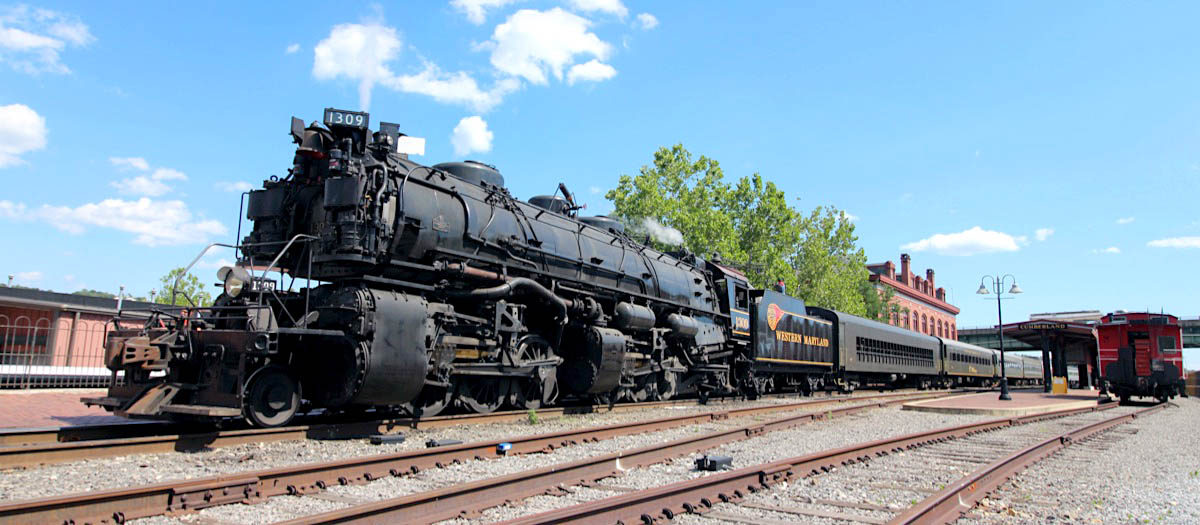
Cumberland, Md / Jun 2022 / RWH
Diesel Power


Western Maryland Scenic #501
to Penn Central #2249
to Conrail #2249
to Western Maryland Scenic #501

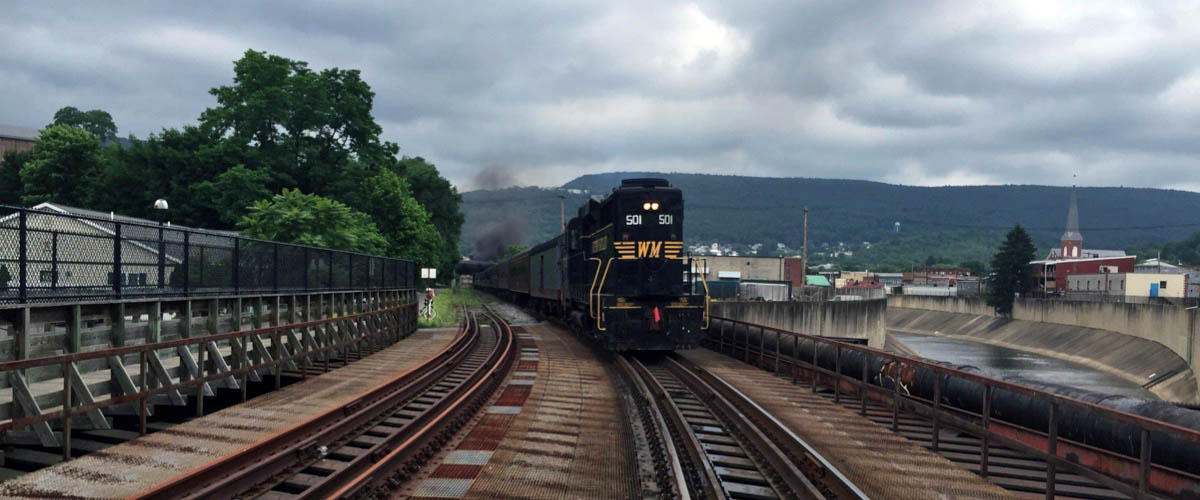
Cumberland, Md / Jun 2015 / RWH
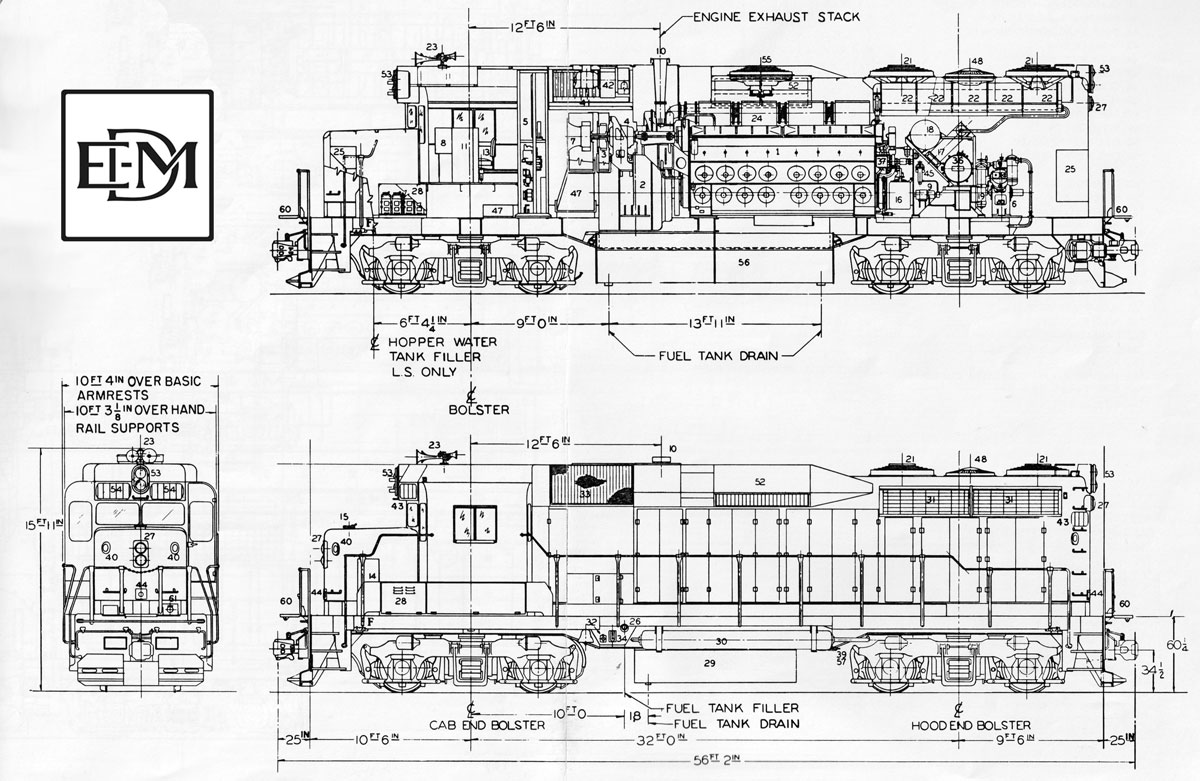
from Our General Motors Scrapbook - Kalmbach / collection
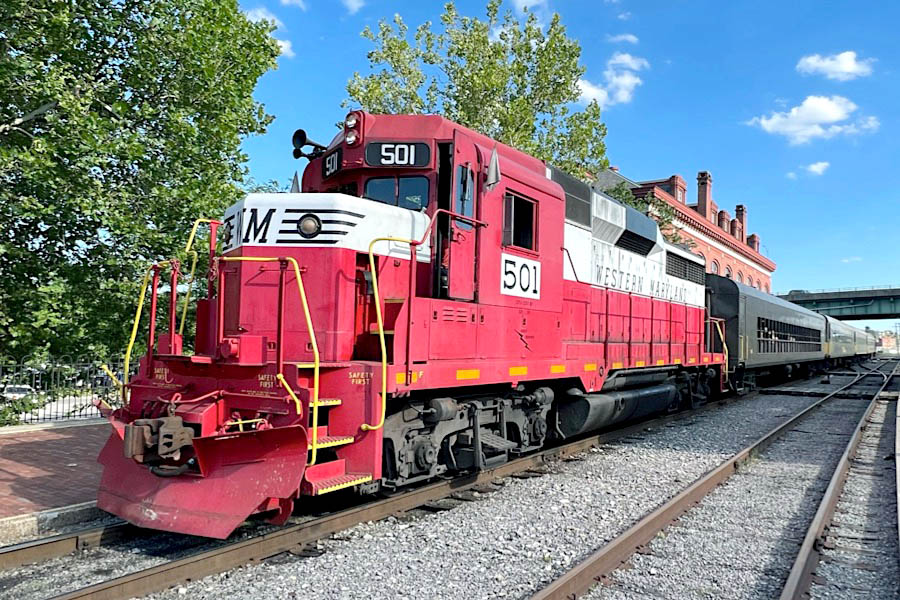
Cumberland, Md / Jun 2022 / Ben Wells
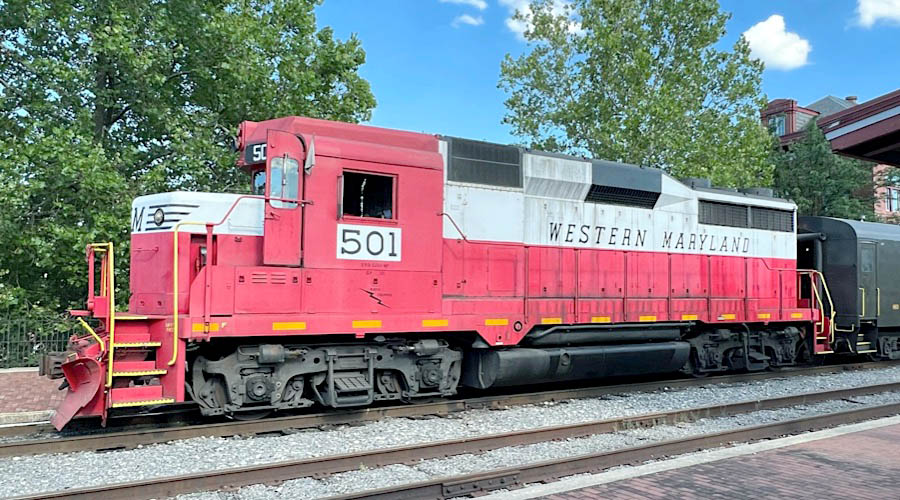
Cumberland, Md / Jun 2022 / Ben Wells
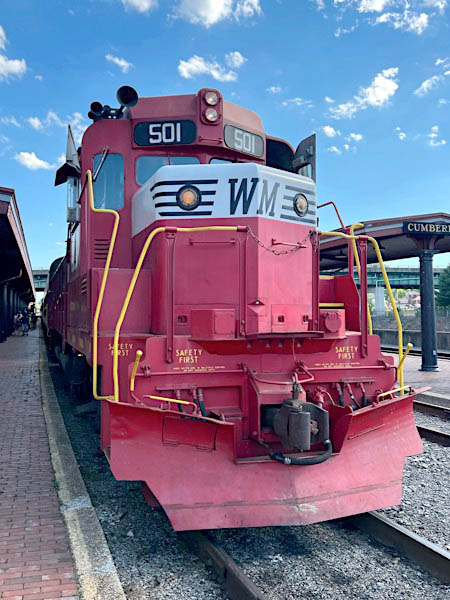
Jun 2022 / Ben Wells
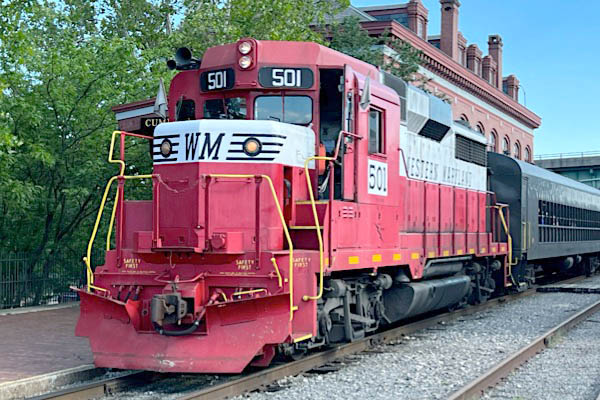
Cumberland, Md / Jun 2022 / Ben Wells
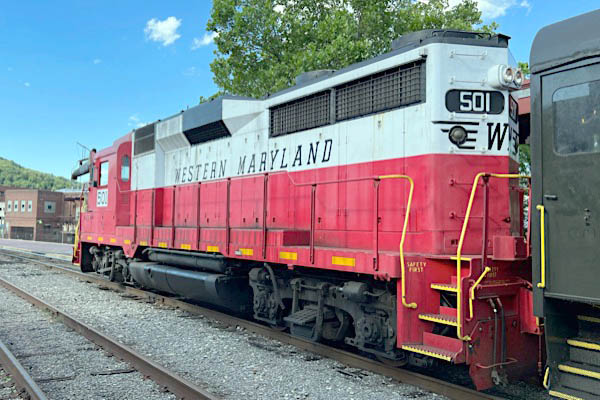
Cumberland, Md / Jun 2022 / Ben Wells
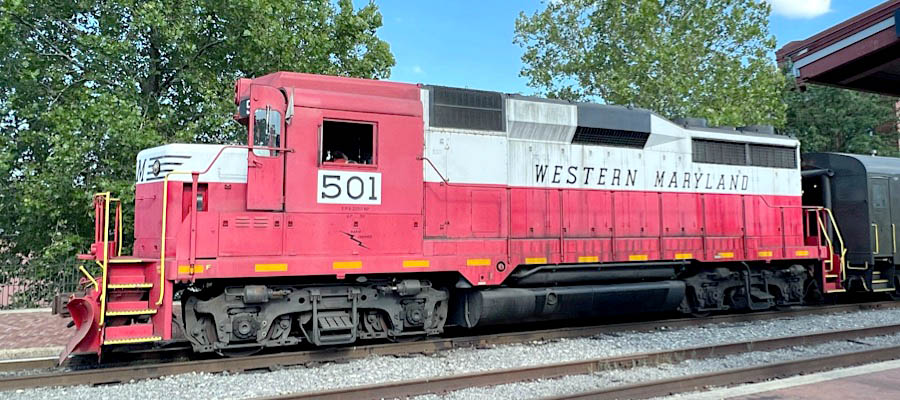
Cumberland, Md / Jun 2022 / Ben Wells
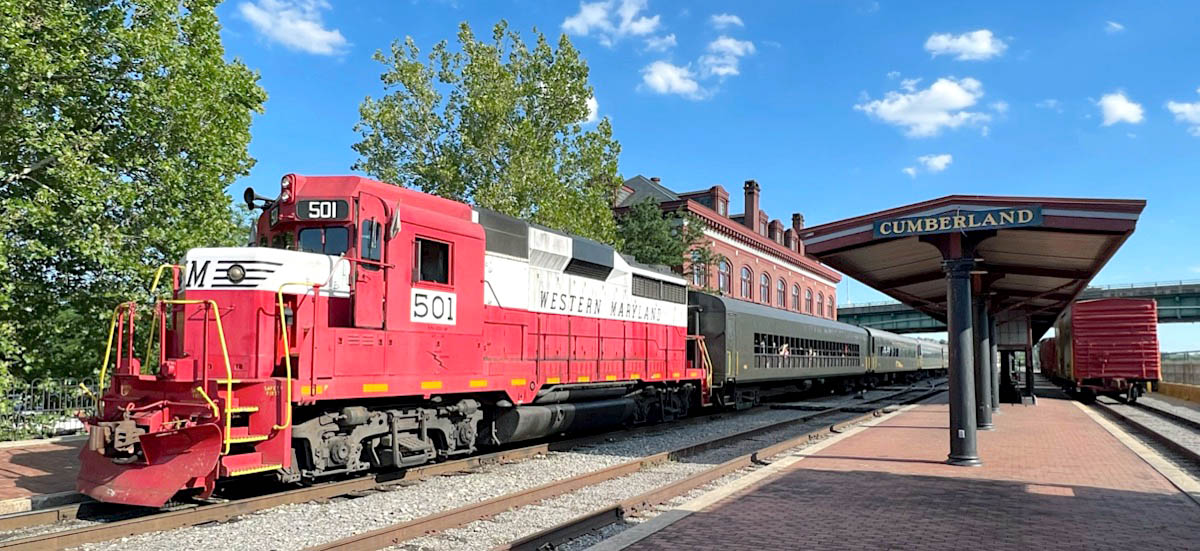
Cumberland, Md / Jun 2022 / Ben Wells
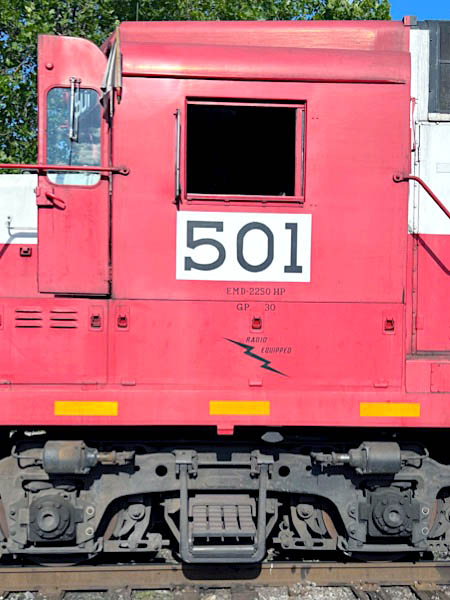
Jun 2022 / Ben Wells
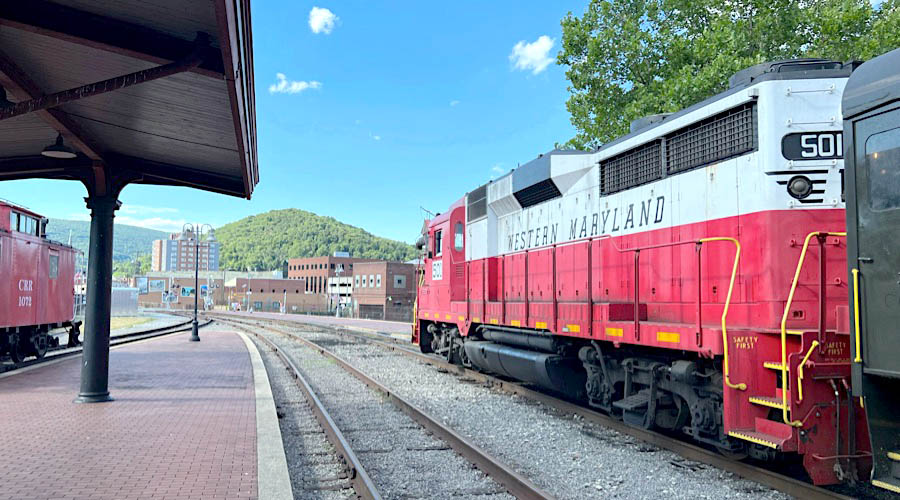
Cumberland, Md / Jun 2022 / Ben Wells
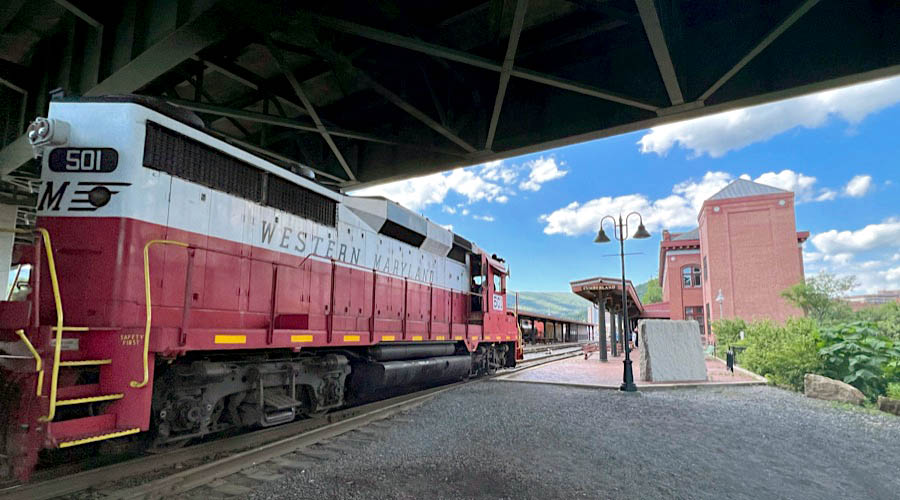
Cumberland, Md / Jun 2022 / Ben Wells
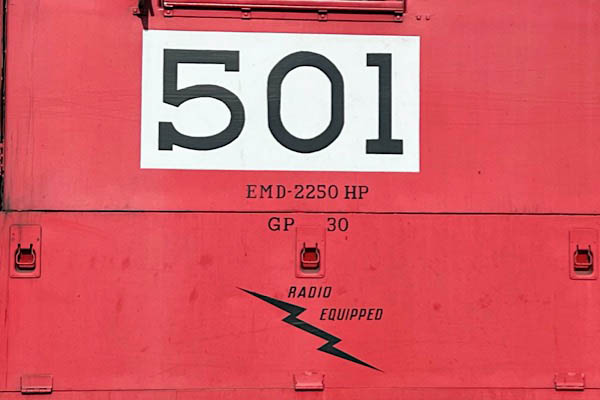
Jun 2022 / Ben Wells

Jun 2022 / Ben Wells
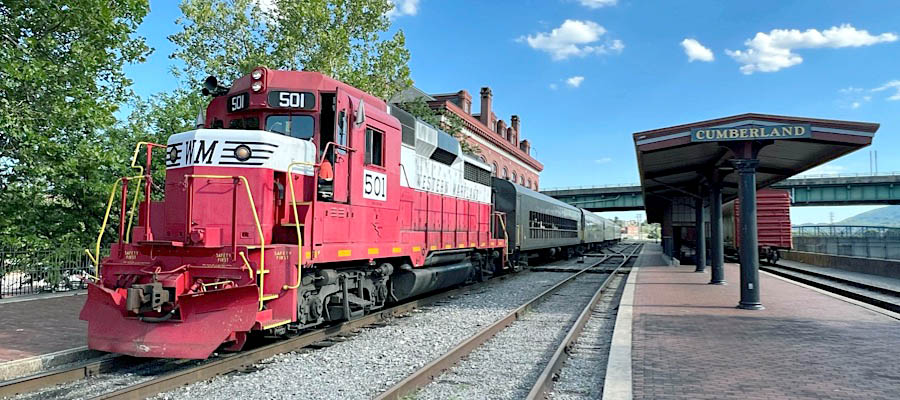
Cumberland, Md / Jun 2022 / Ben Wells
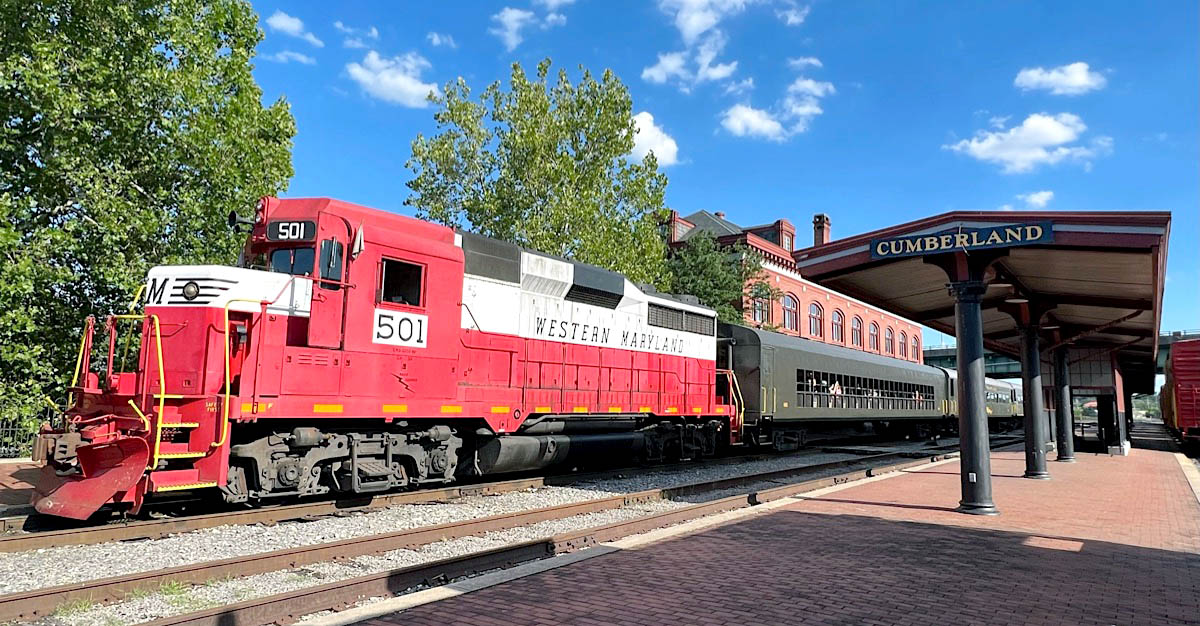
Cumberland, Md / Jun 2022 / Ben Wells
HawkinsRails thanks our beloved railfan pal Ben Wells for use of his Western Maryland #501 photos



Western Maryland Scenic #502
to Conrail #2175
to Western Maryland Scenic #502

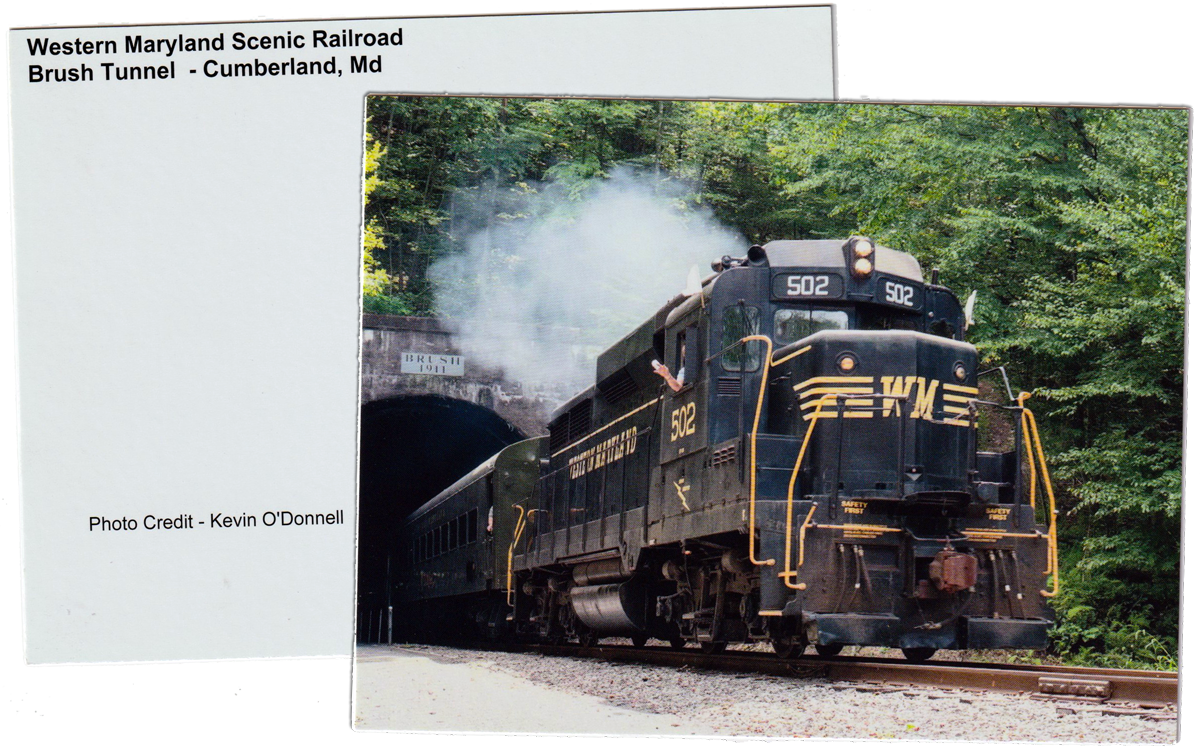
postcard / collection
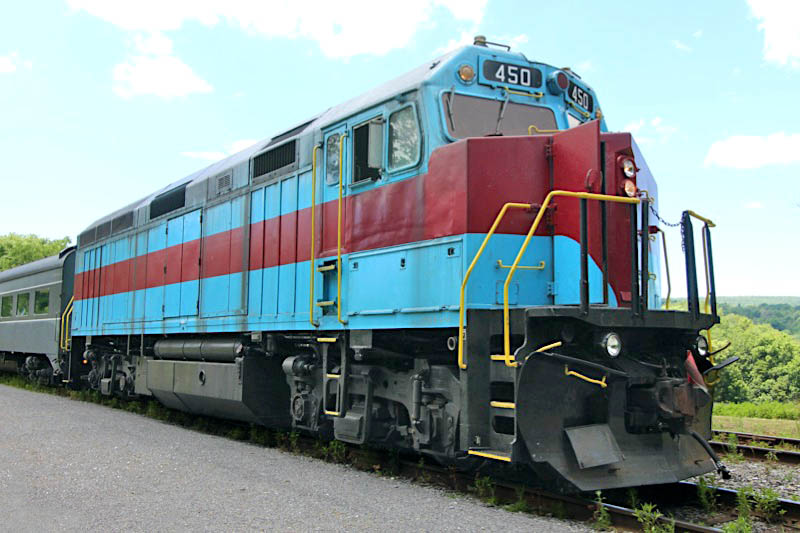
Western Maryland Scenic #450
Frostburg, Md / Jun 2022 / RWH


Western Maryland Scenic #450
to Canadian American #450
to Larry's Truck & Electric #450
to Western Maryland Scenic #450
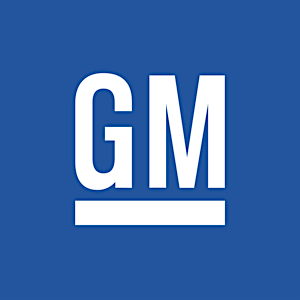
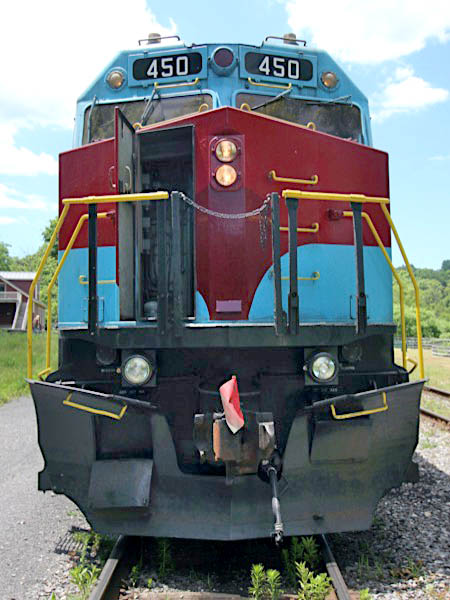
Jun 2022 / RWH
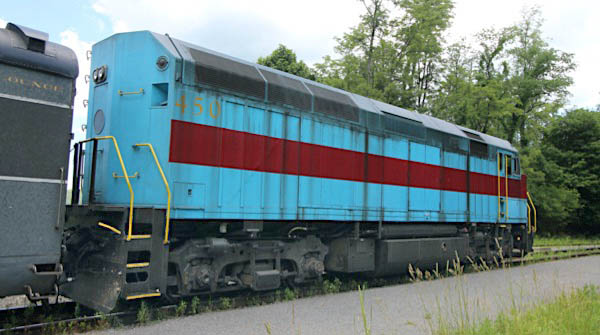
Frostburg, Md / Jun 2022 / RWH
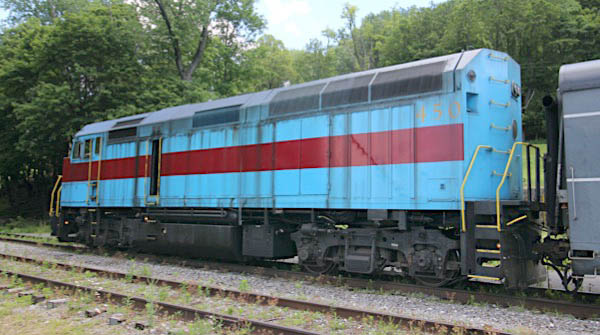
Frostburg, Md / Jun 2022 / RWH
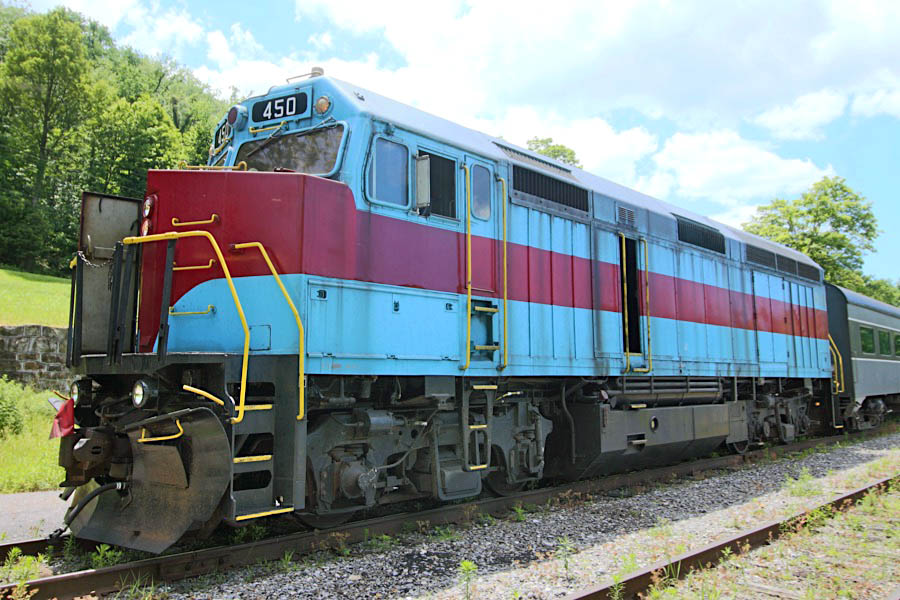
Frostburg, Md / Jun 2022 / RWH
Western Maryland Scenic #450 is one of a handful of former Amtrak passenger locomotives rebuilt and regeared for shortline freight and tourist service. In addition to traction motor re-gearing and other mechanical rebuilding, the noses of the locomotives have been chopped down to make room for front switching platforms and steps required by the Federal Railroad Administration for freight service. See our Age of Steam Roundhouse museum scrapbook in Preservation for more examples.
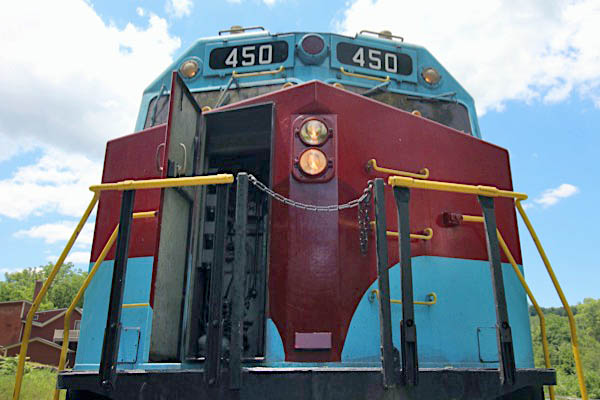
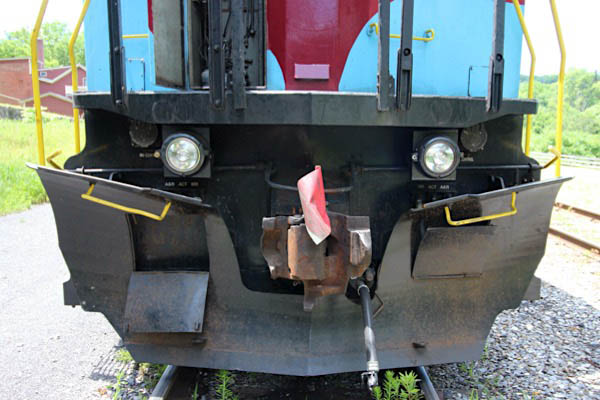
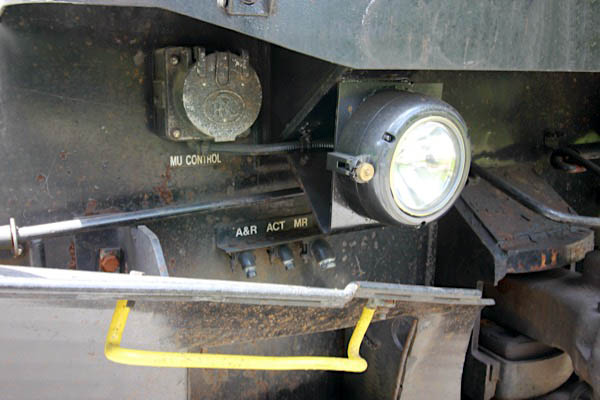
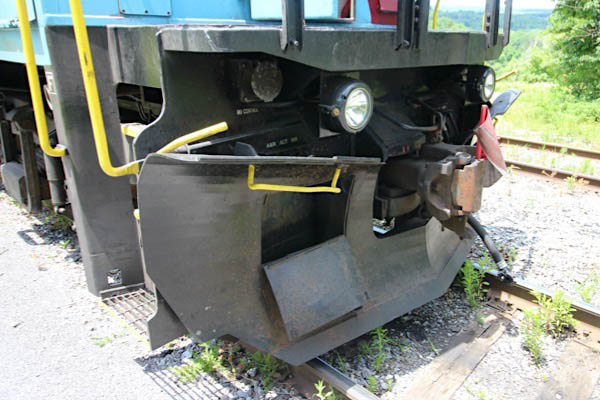
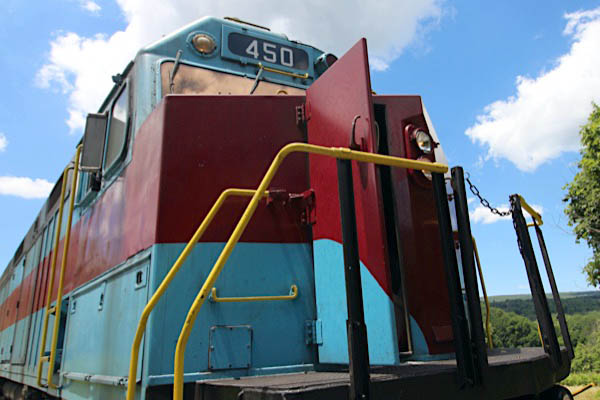
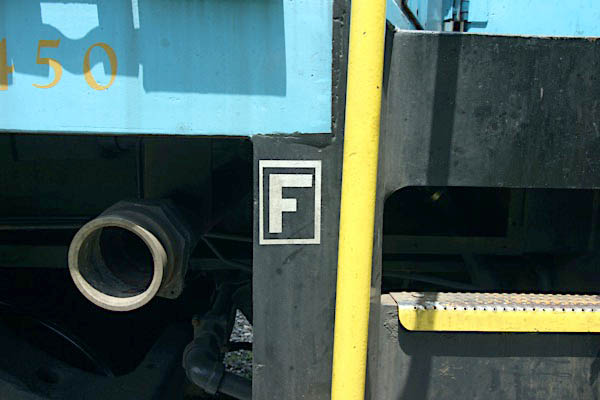
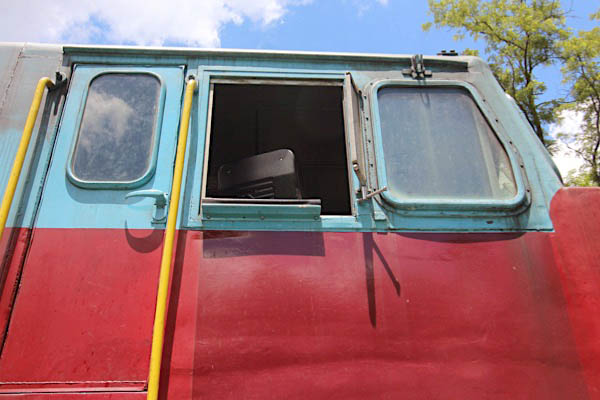
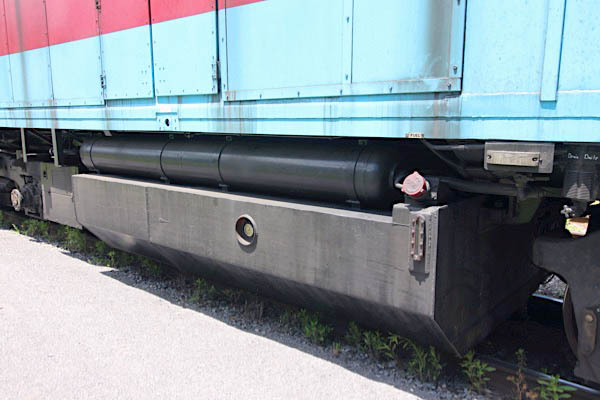
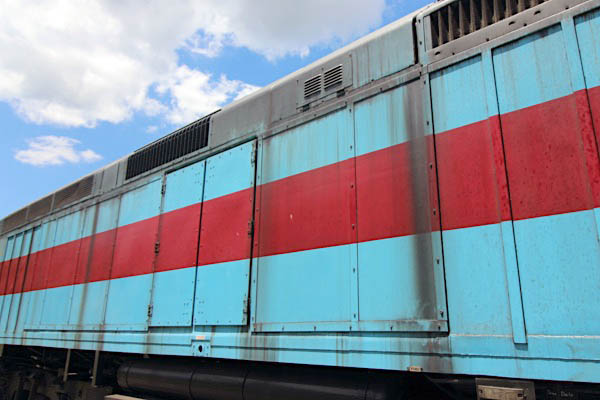
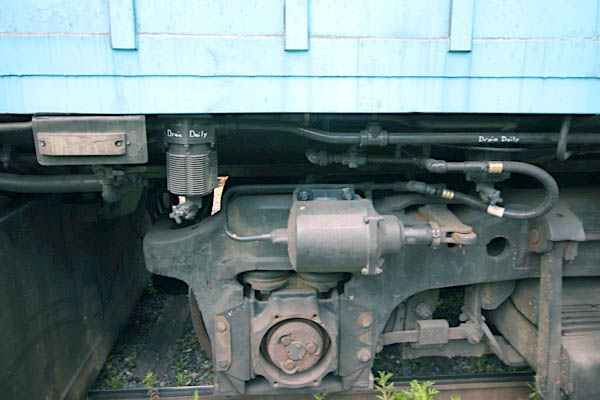
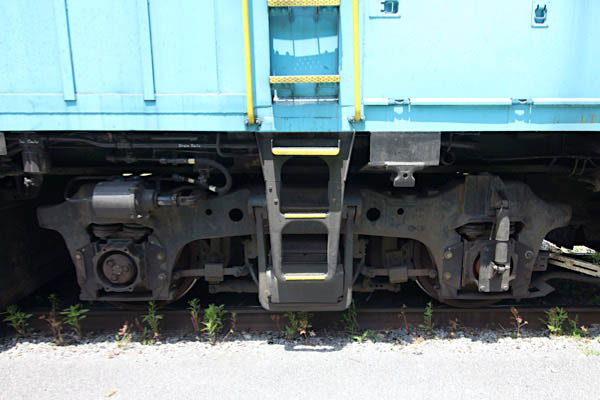
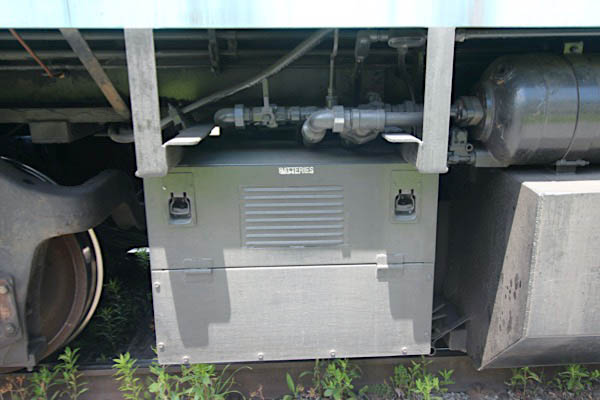
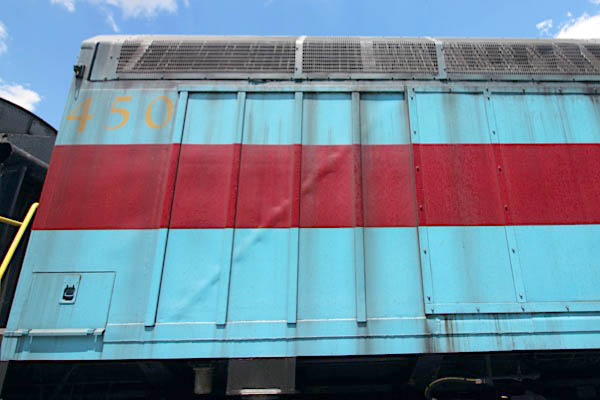
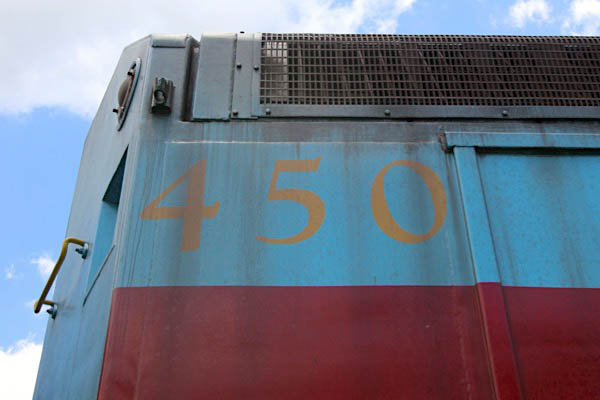
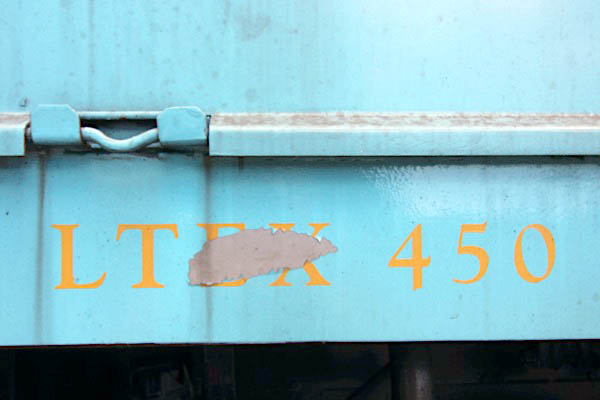
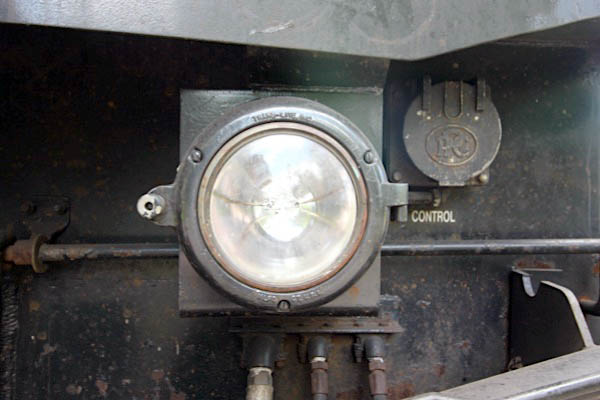
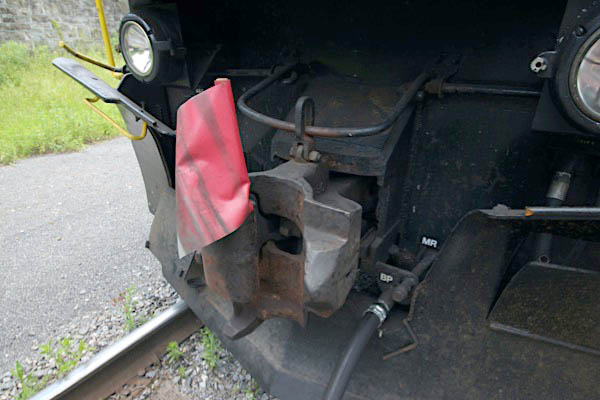
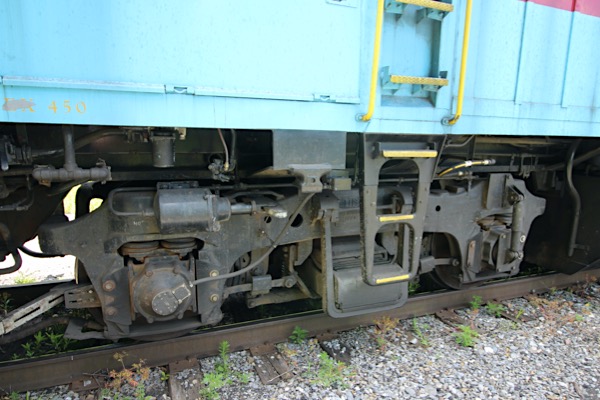
Jun 2022 / RWH
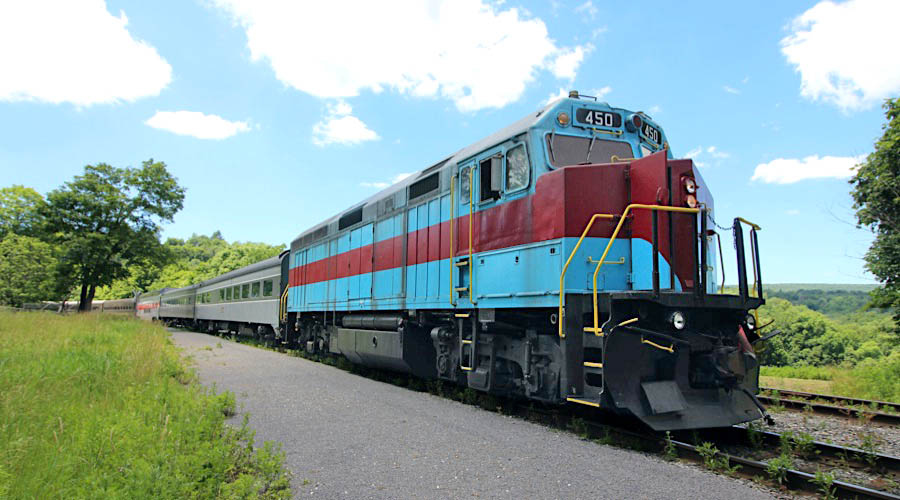
Frostburg, Md / Jun 2022 / RWH
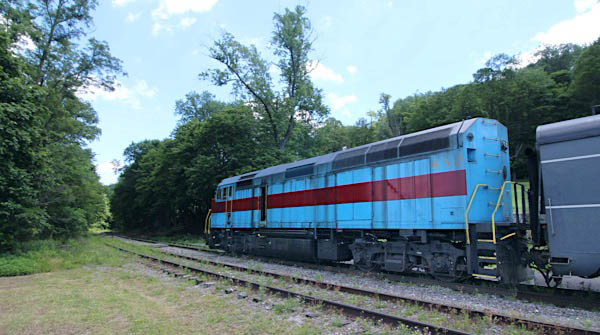
Frostburg, Md / Jun 2022 / RWH
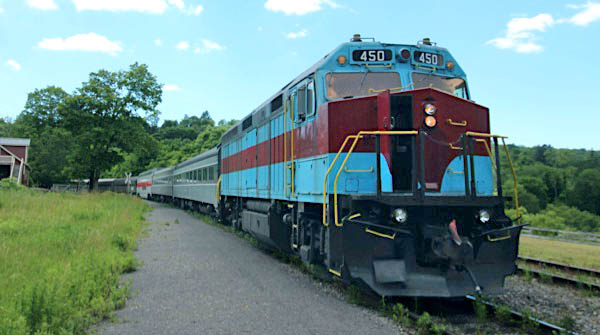
Frostburg, Md / Jun 2022 / RWH
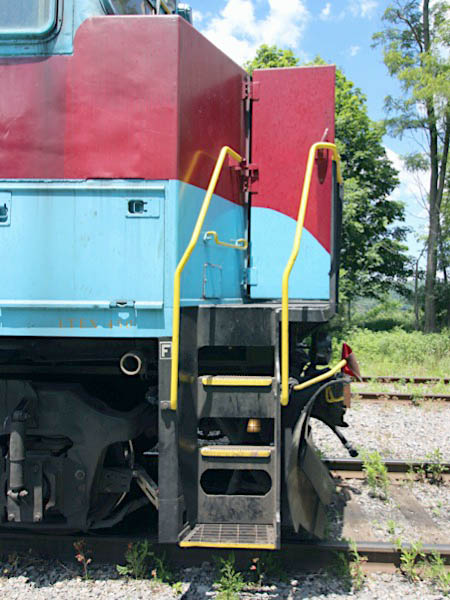
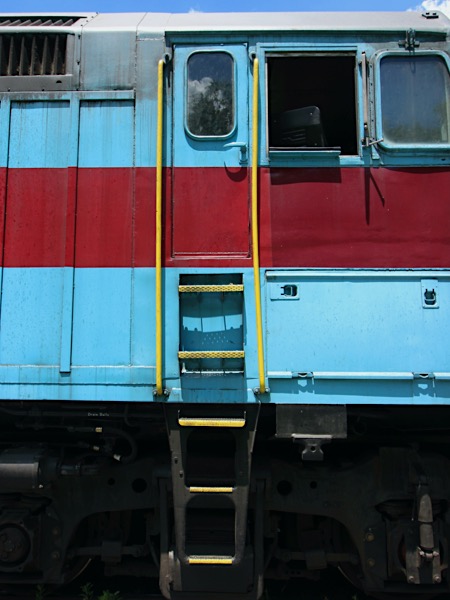
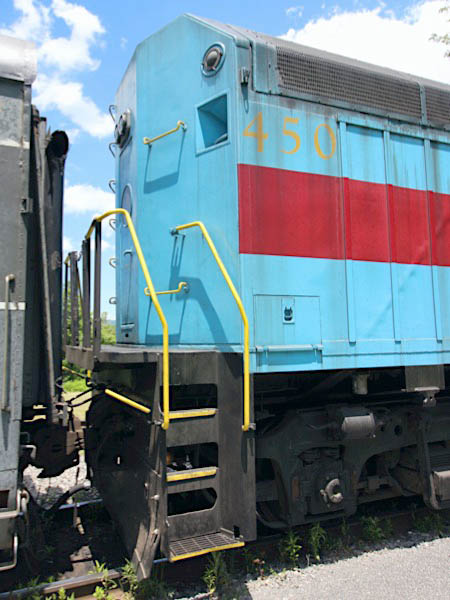
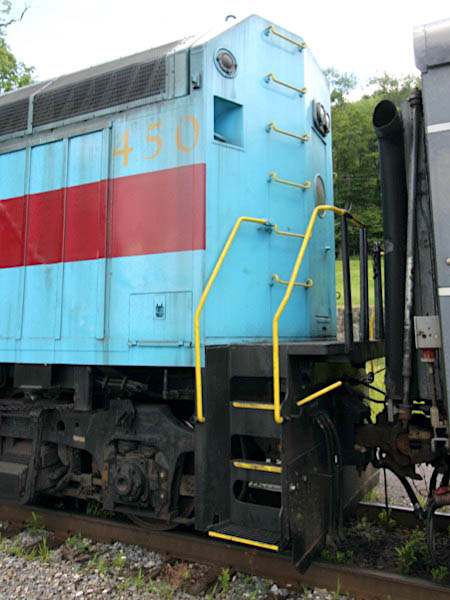
Jun 2022 / RWH
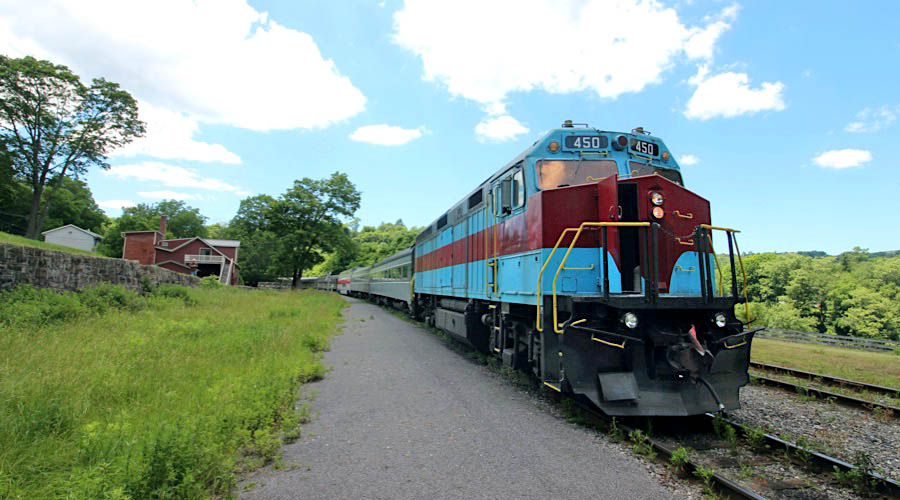
Frostburg, Md / Jun 2022 / RWH
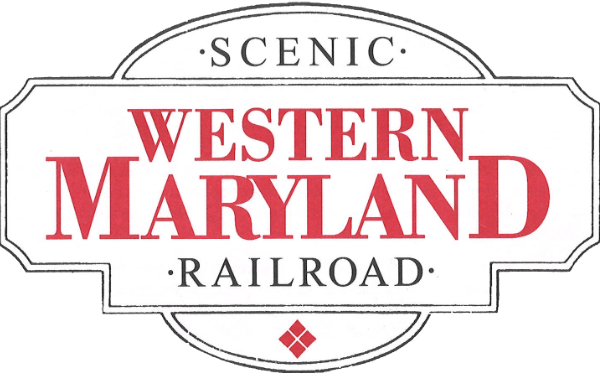
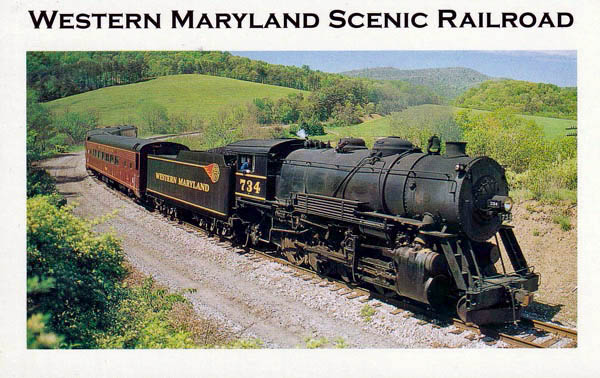 Western Maryland Scenic Railroad has been providing excursions of all kinds for over 30 years in the heart of Mountain Maryland. We are a 501(c)3 not-for-profit organization that has a focus on heritage railroading through restoration, education, and experience. Specialty trains include steam and diesel-powered excursions like The Polar Express Train Ride, Murder Mystery Dinner Trains, Ice Cream Trains, Spring Fling, Pumpkin Patch, Evening Dinner Trains, Private Charters, and more.
Western Maryland Scenic Railroad has been providing excursions of all kinds for over 30 years in the heart of Mountain Maryland. We are a 501(c)3 not-for-profit organization that has a focus on heritage railroading through restoration, education, and experience. Specialty trains include steam and diesel-powered excursions like The Polar Express Train Ride, Murder Mystery Dinner Trains, Ice Cream Trains, Spring Fling, Pumpkin Patch, Evening Dinner Trains, Private Charters, and more.
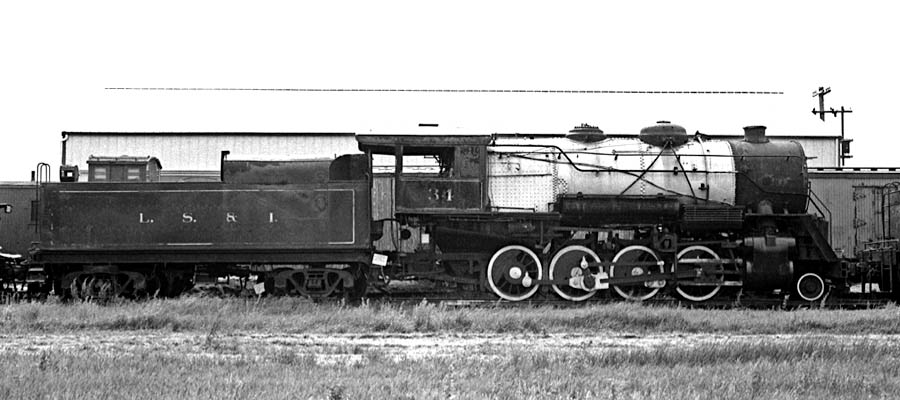

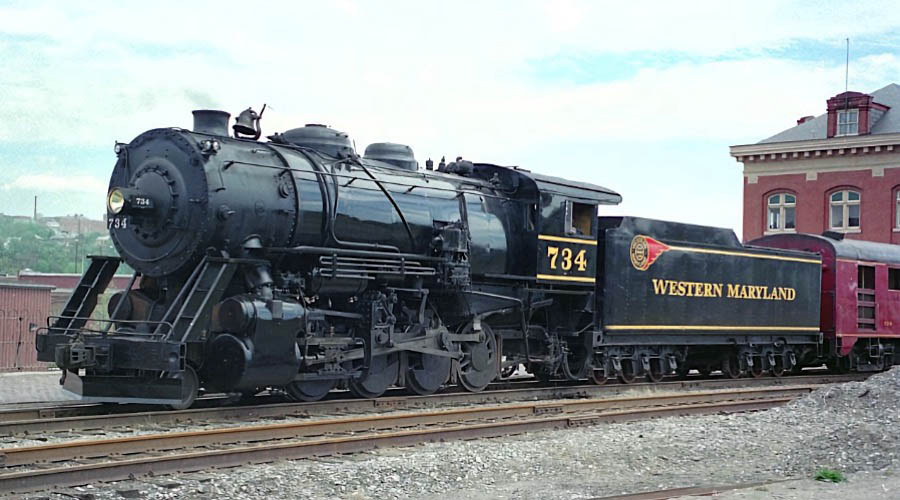
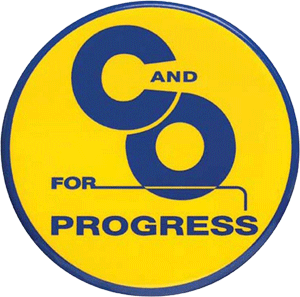 Called the "Mallet" (pronounced Mallay), #1309 was one of the last types of steam locomotives retired when diesel-electric engines came into the picture. The Mallet is a compound locomotive that was created by Swiss mechanical engineer Anatole Mallet in 1885 for the Bayonne-Anglet-Biarritz Railway in France. The locomotive is called "compound" because it uses the steam twice, first for the rear set of high pressure cylinders and second for the low pressure front cylinders. On the locomotive there are two cross compound air compressors mounted on the smoke box door to supply enough air for frequent heavy braking for use in heavy mountain railroading. This mounting of compressors on the front of the smokebox gave the locomotive a more "massive" appearance and became known as the "C&O look". This look can be seen on the center locomotive in the steamlocomotive.com header image.
The "mallet" design made its debut in the United States when the American Locomotive Company "ALCO" constructed an 0-6-6-0 compound Mallet for the B&O in 1904. In 1910 the C&O changed to their version of the 2-6-6-2 compound locomotive that helped drag coal through even more mountainous areas and tighter curves in West Virginia and Kentucky.
Called the "Mallet" (pronounced Mallay), #1309 was one of the last types of steam locomotives retired when diesel-electric engines came into the picture. The Mallet is a compound locomotive that was created by Swiss mechanical engineer Anatole Mallet in 1885 for the Bayonne-Anglet-Biarritz Railway in France. The locomotive is called "compound" because it uses the steam twice, first for the rear set of high pressure cylinders and second for the low pressure front cylinders. On the locomotive there are two cross compound air compressors mounted on the smoke box door to supply enough air for frequent heavy braking for use in heavy mountain railroading. This mounting of compressors on the front of the smokebox gave the locomotive a more "massive" appearance and became known as the "C&O look". This look can be seen on the center locomotive in the steamlocomotive.com header image.
The "mallet" design made its debut in the United States when the American Locomotive Company "ALCO" constructed an 0-6-6-0 compound Mallet for the B&O in 1904. In 1910 the C&O changed to their version of the 2-6-6-2 compound locomotive that helped drag coal through even more mountainous areas and tighter curves in West Virginia and Kentucky.
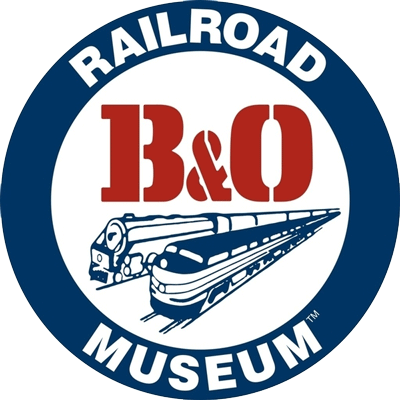
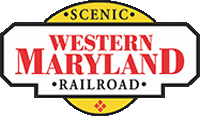
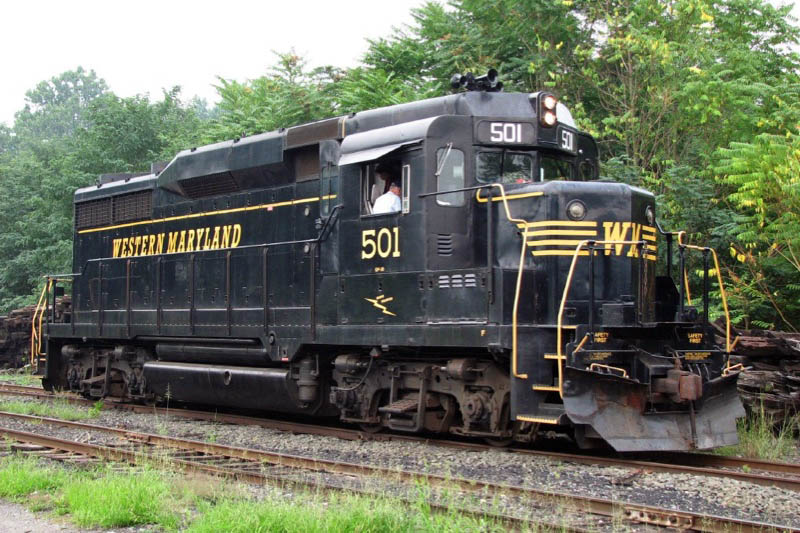
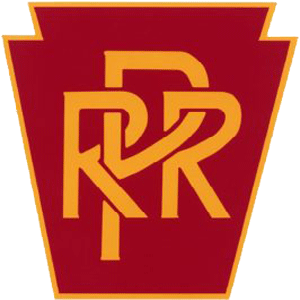
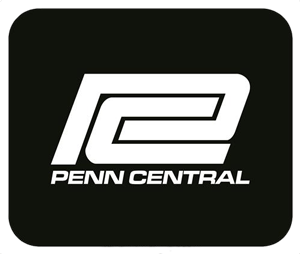
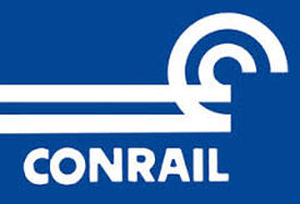
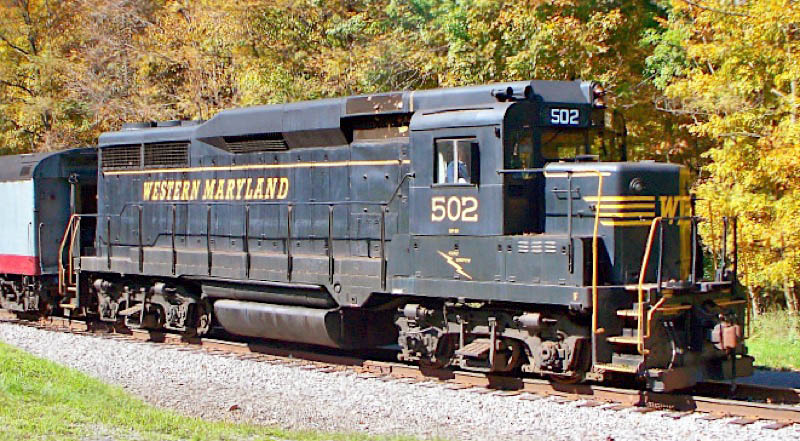
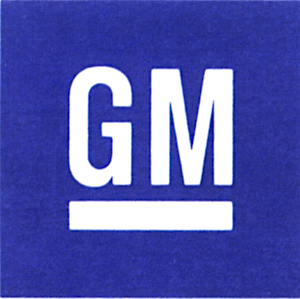
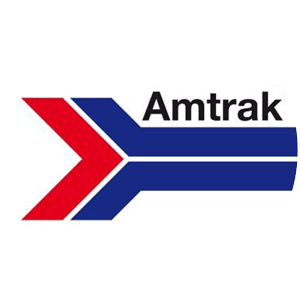
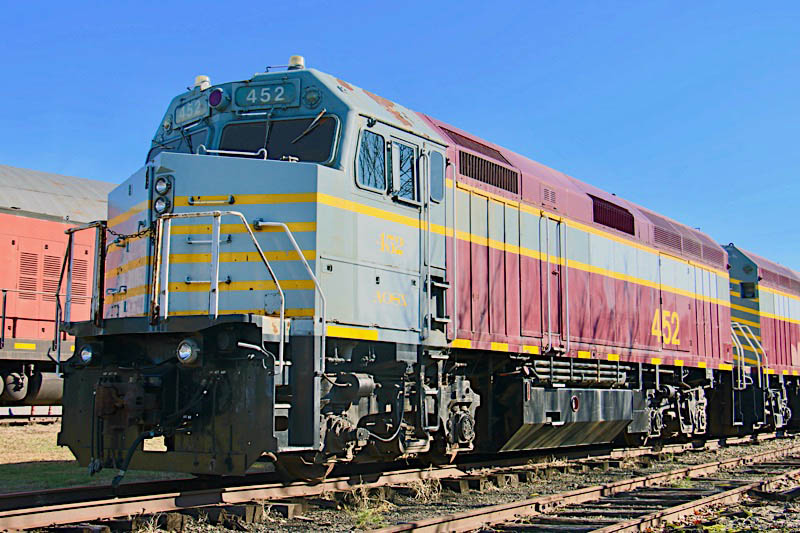 Western Maryland Scenic #450 is one of a handful of former Amtrak passenger locomotives rebuilt and regeared for shortline freight and tourist service. In addition to traction motor re-gearing and other mechanical rebuilding, the noses of the locomotives have been chopped down to make room for front switching platforms and steps required by the Federal Railroad Administration for freight service. See our
Western Maryland Scenic #450 is one of a handful of former Amtrak passenger locomotives rebuilt and regeared for shortline freight and tourist service. In addition to traction motor re-gearing and other mechanical rebuilding, the noses of the locomotives have been chopped down to make room for front switching platforms and steps required by the Federal Railroad Administration for freight service. See our 